
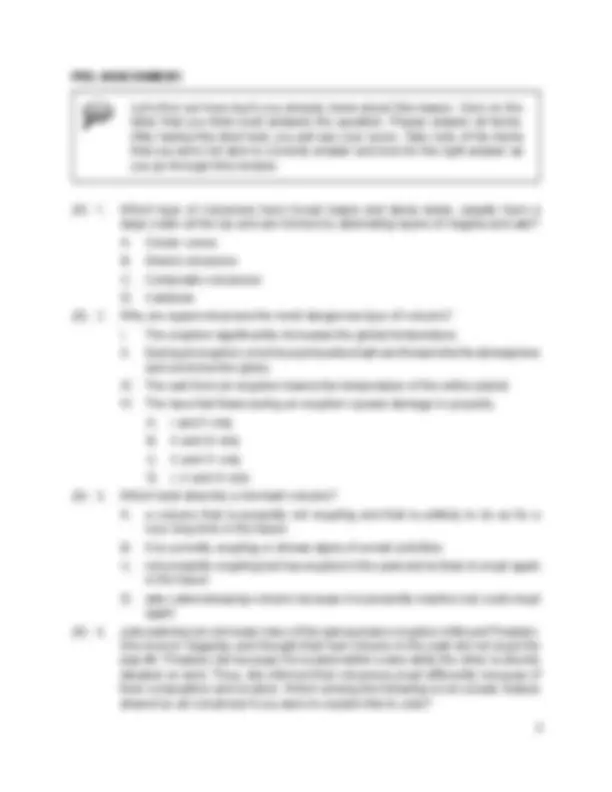
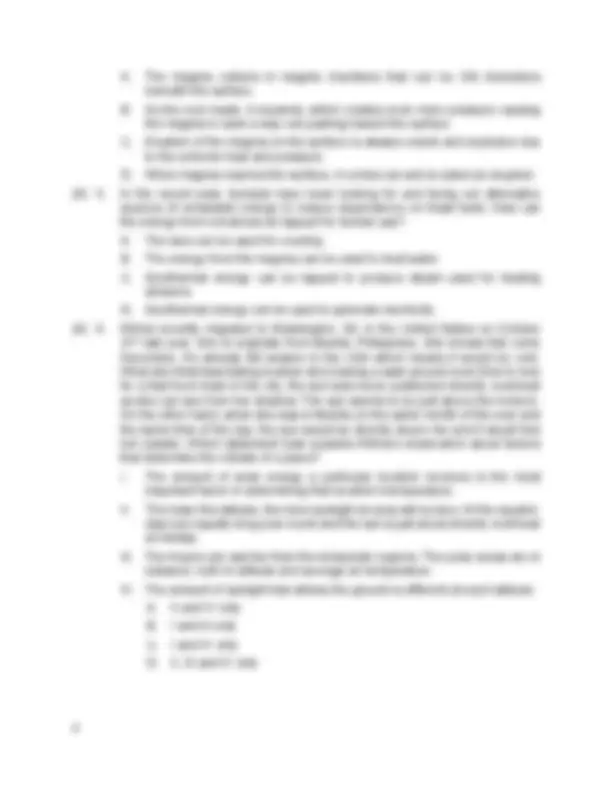
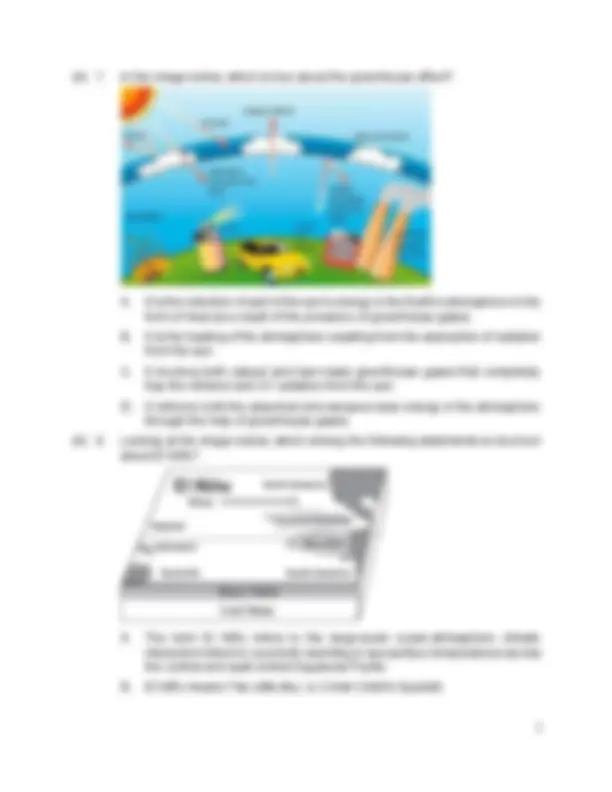
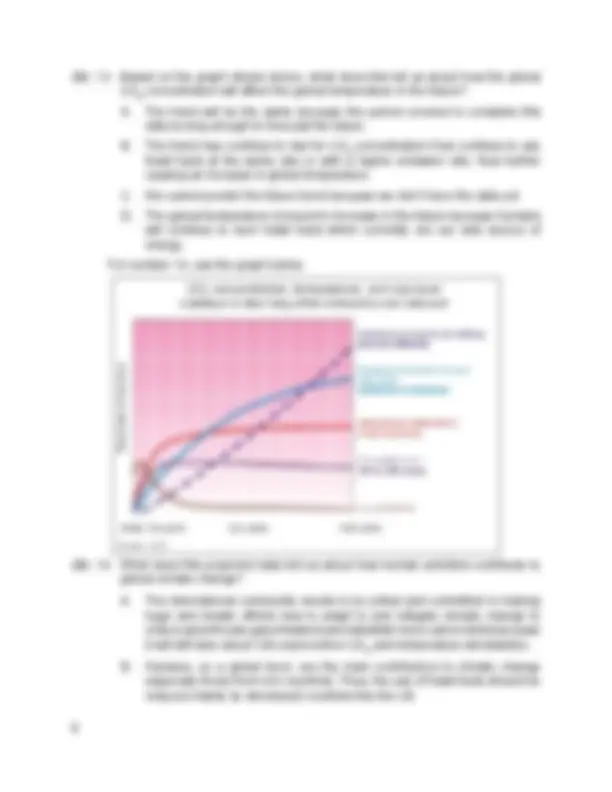
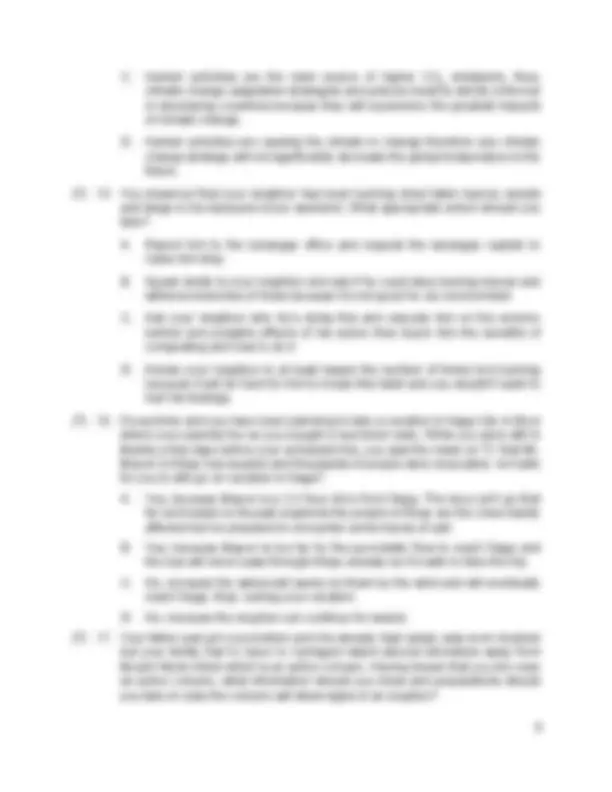
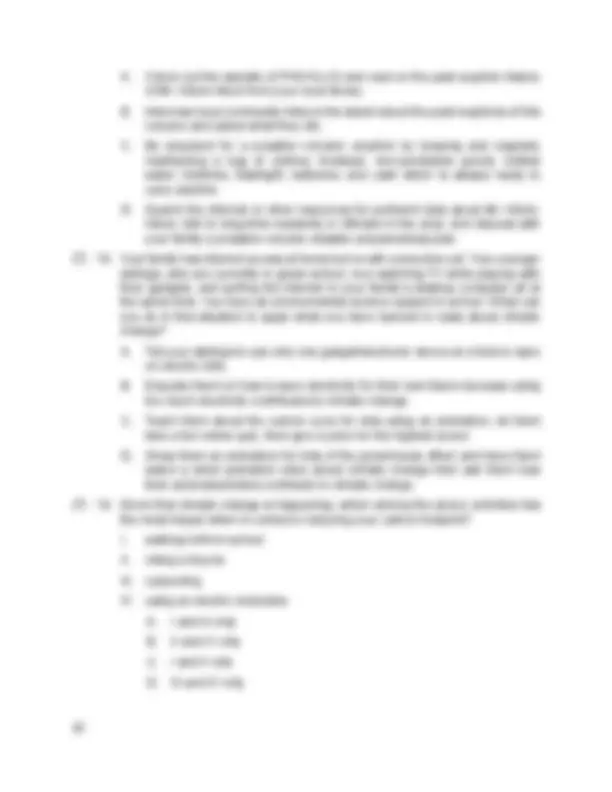
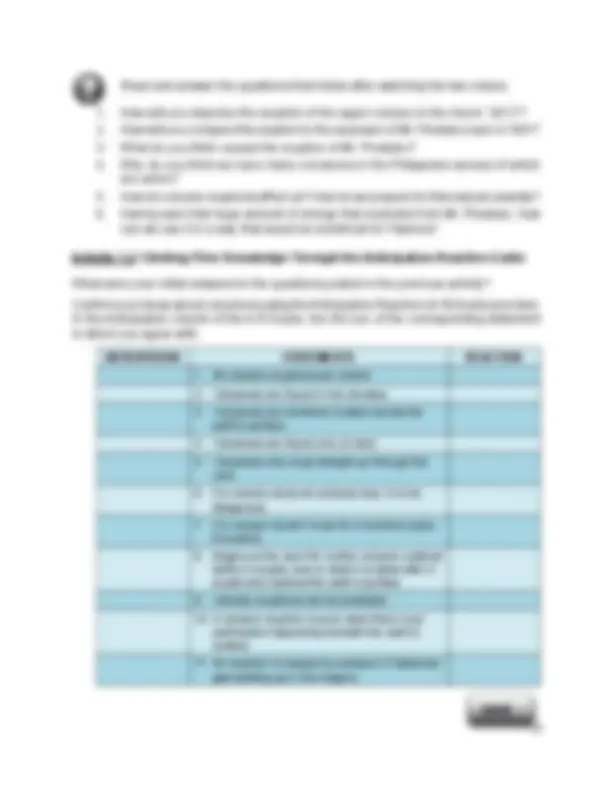
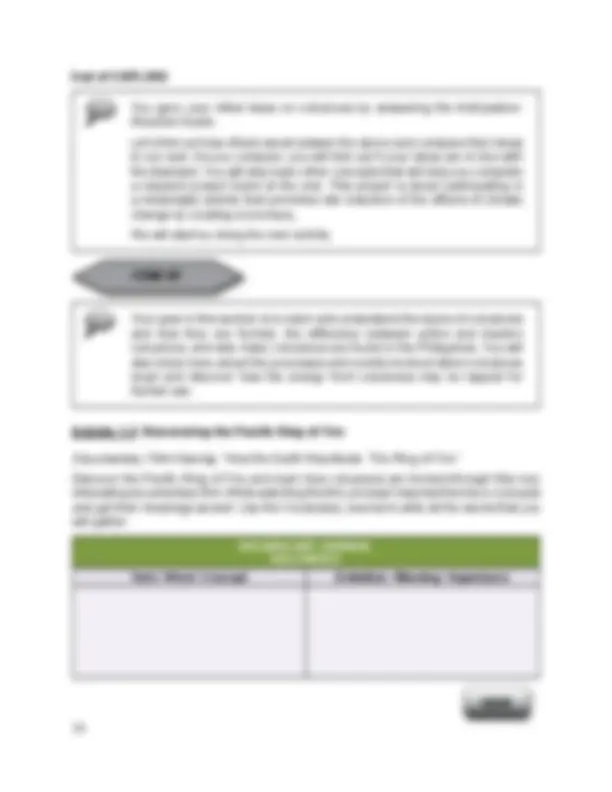
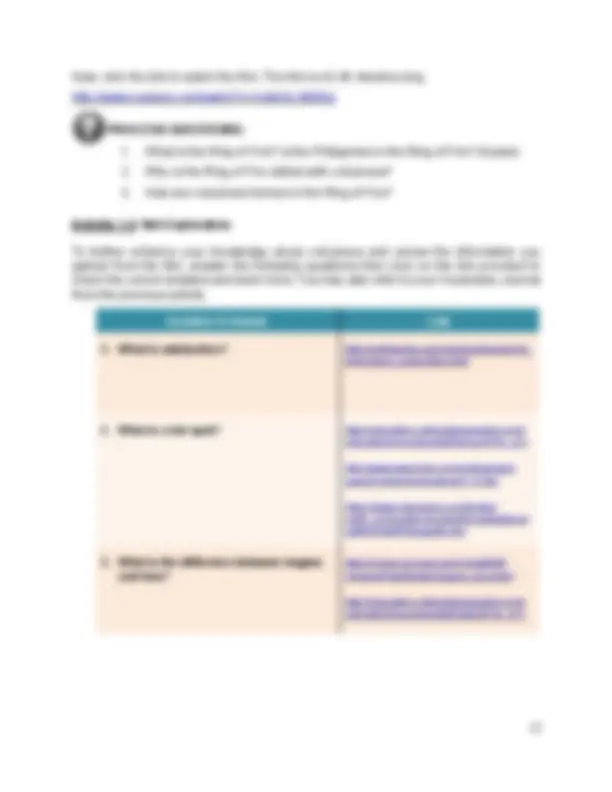
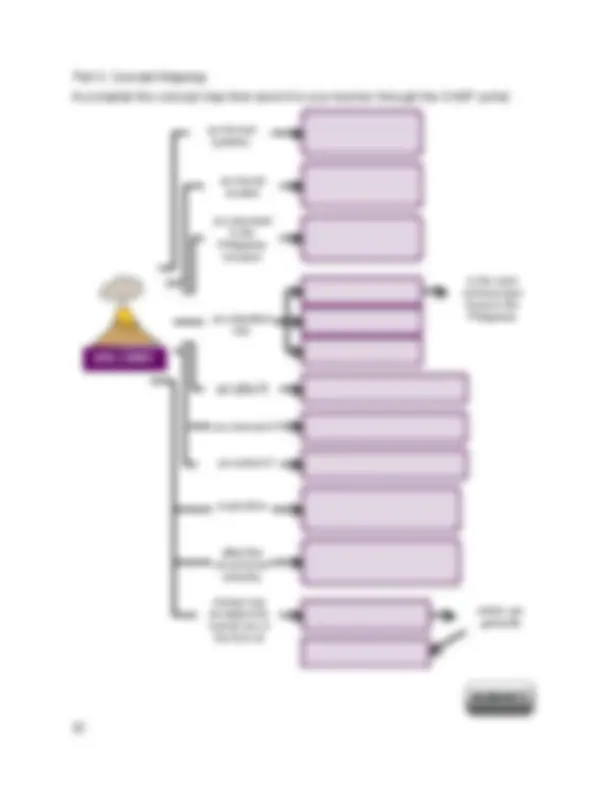

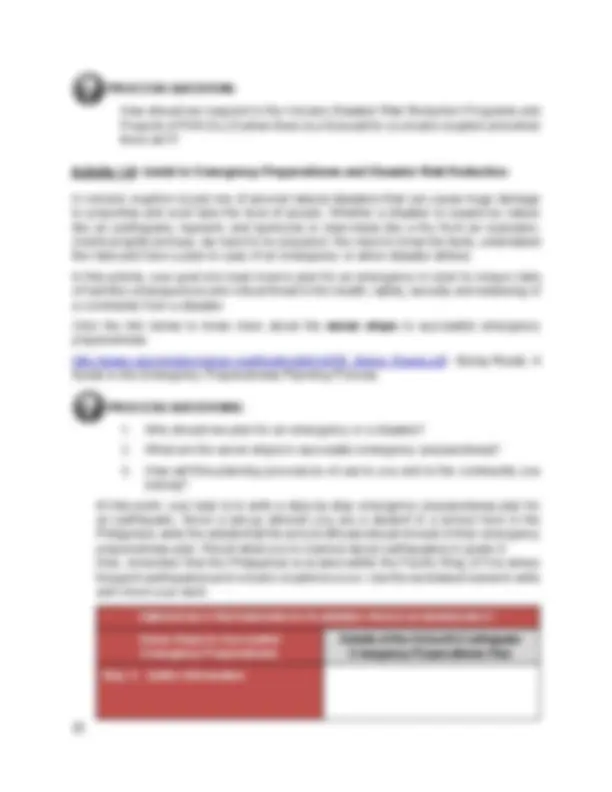
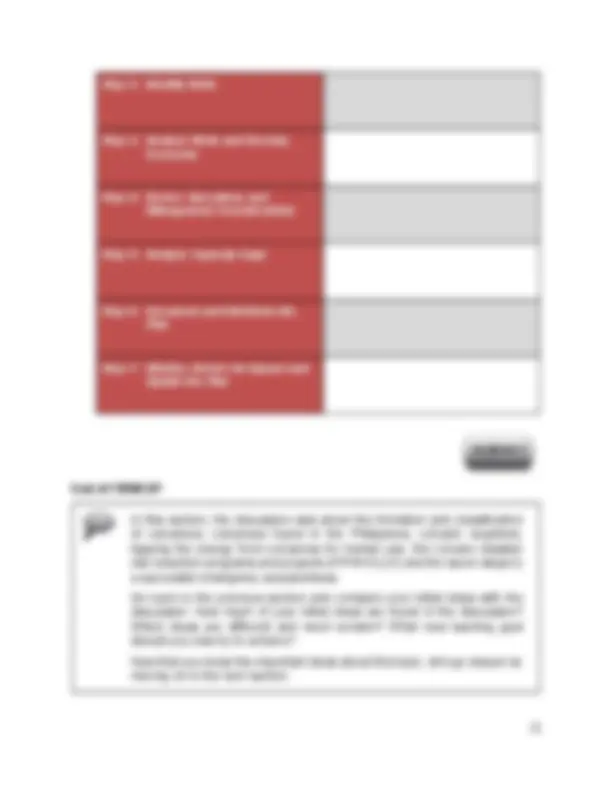
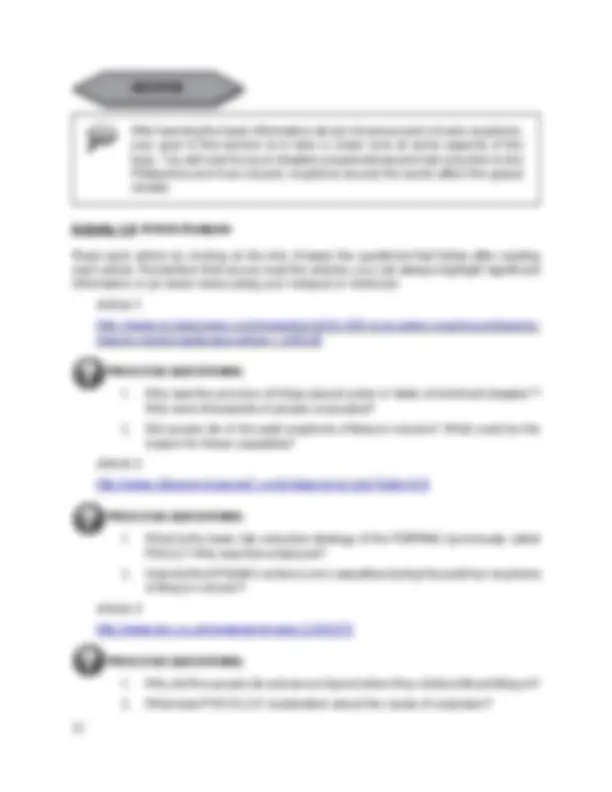
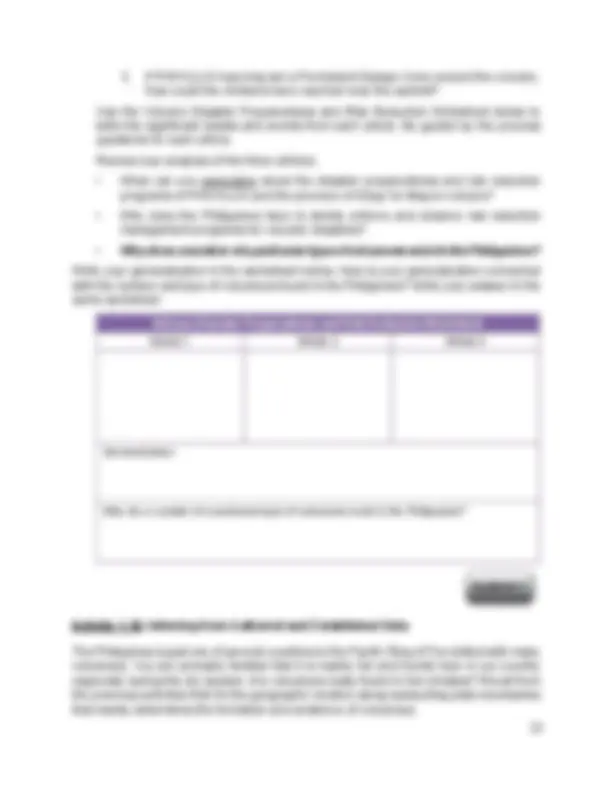
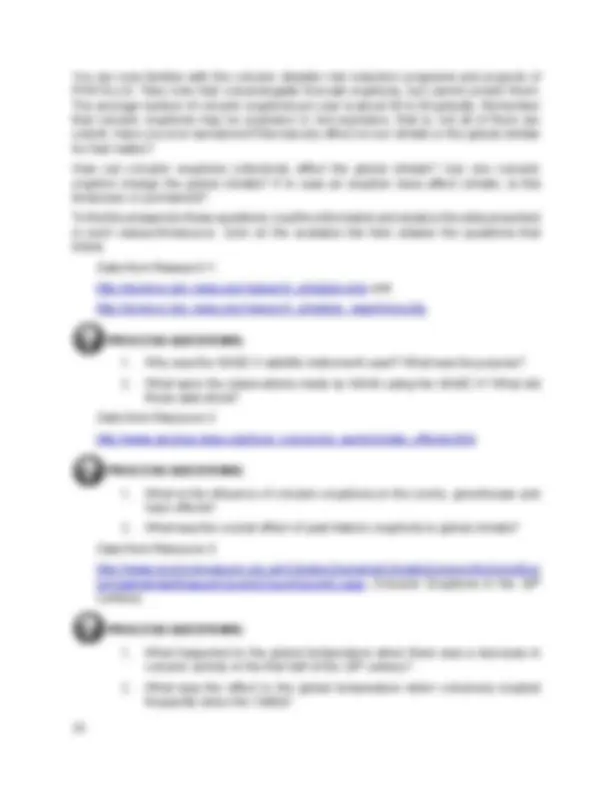

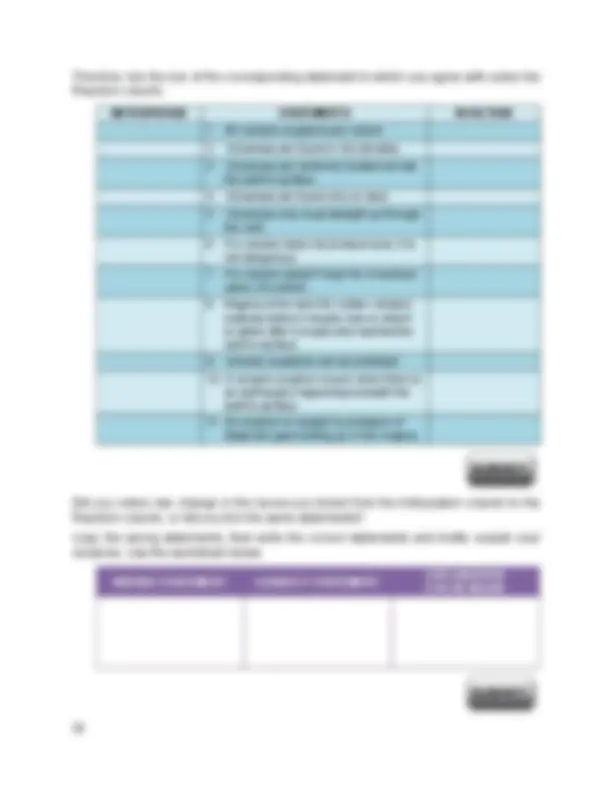
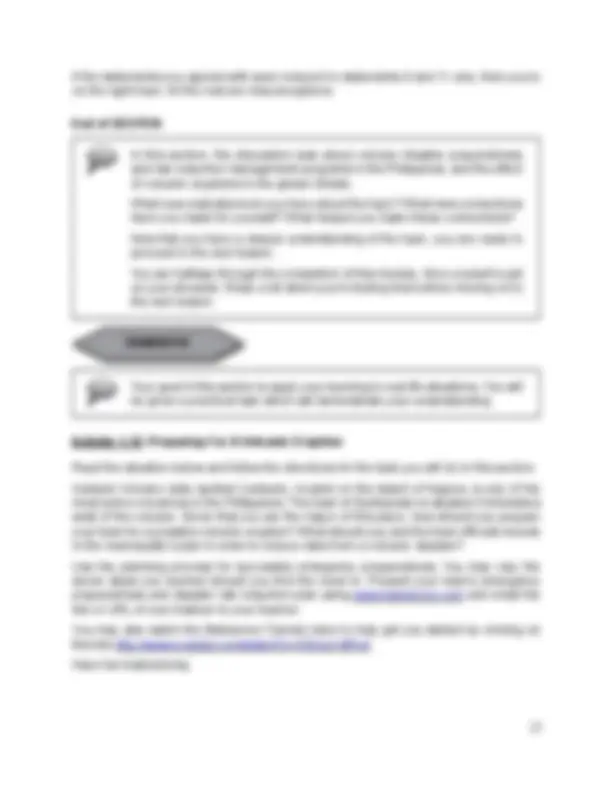

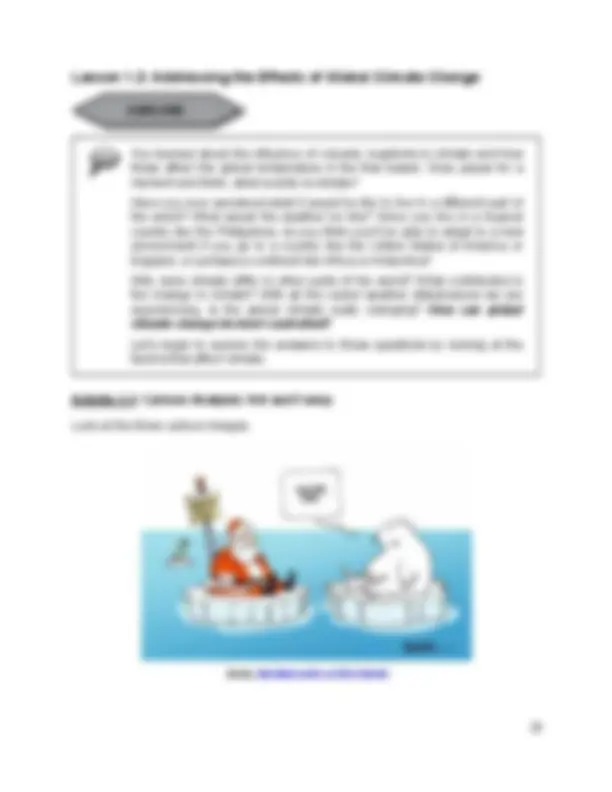
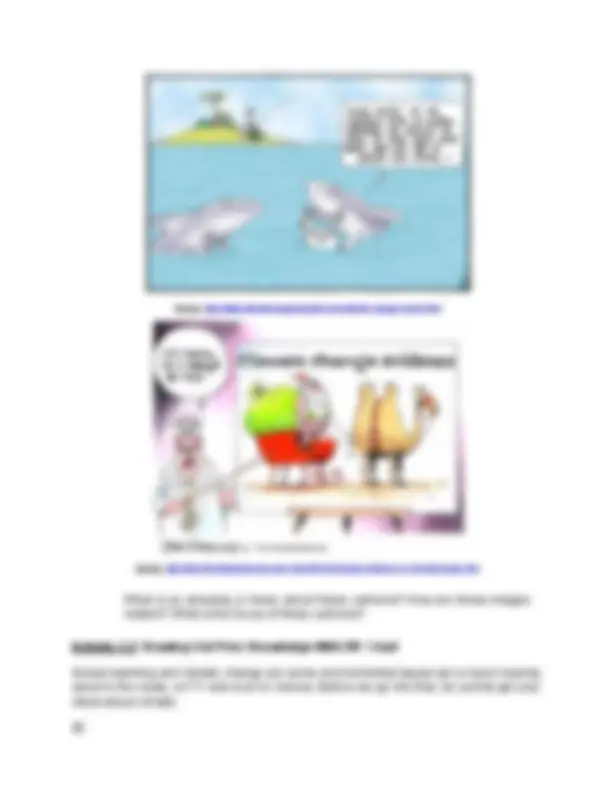
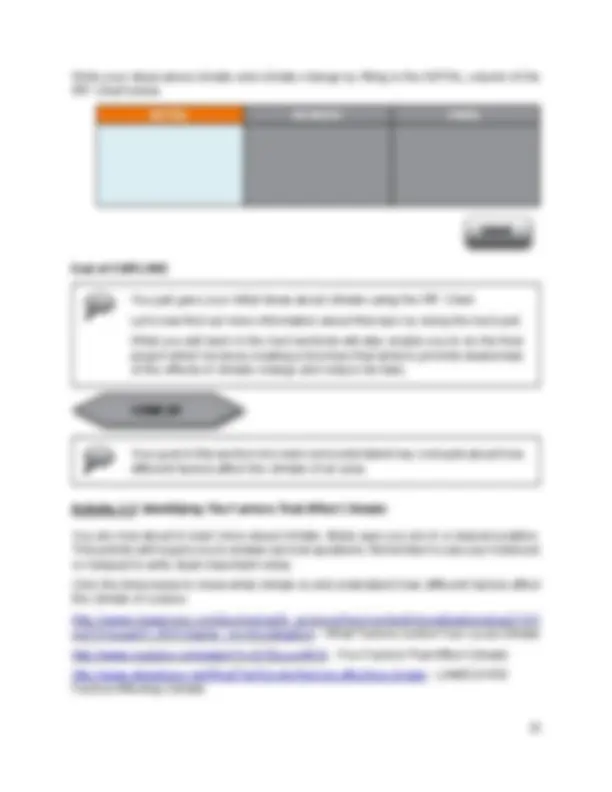
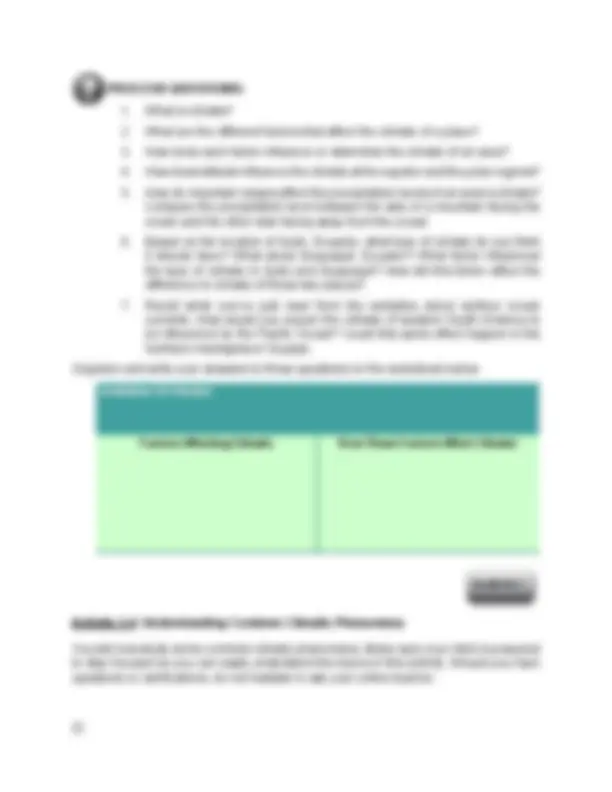
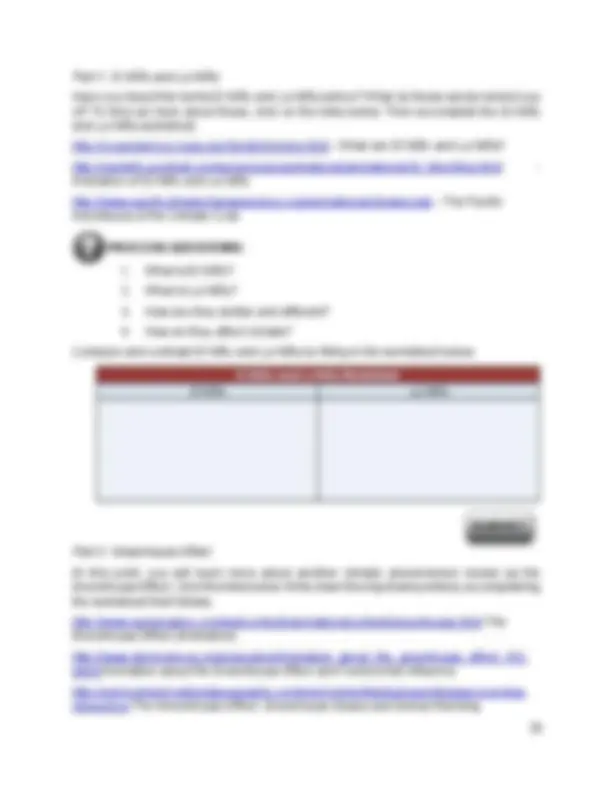
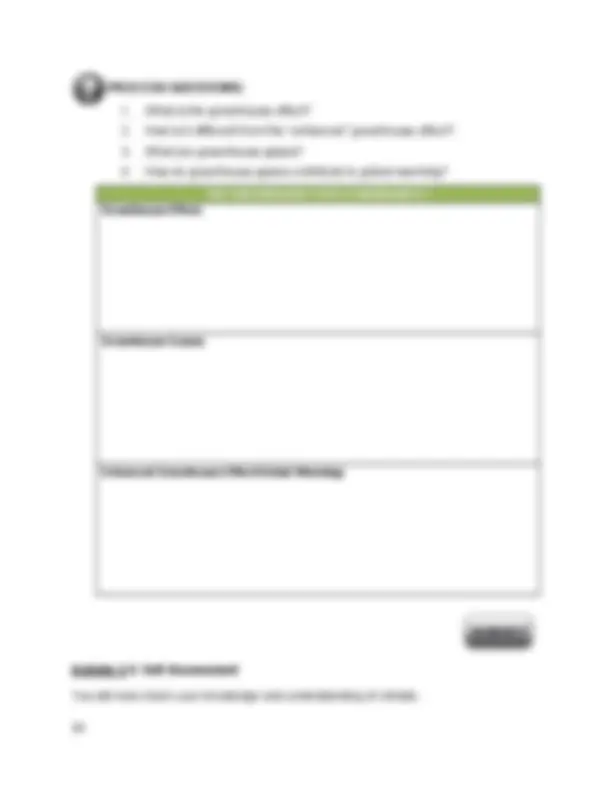
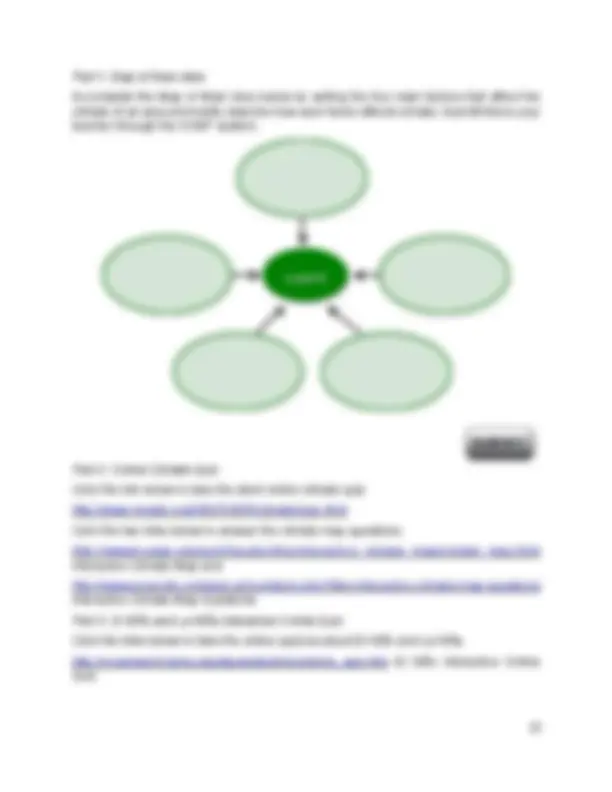
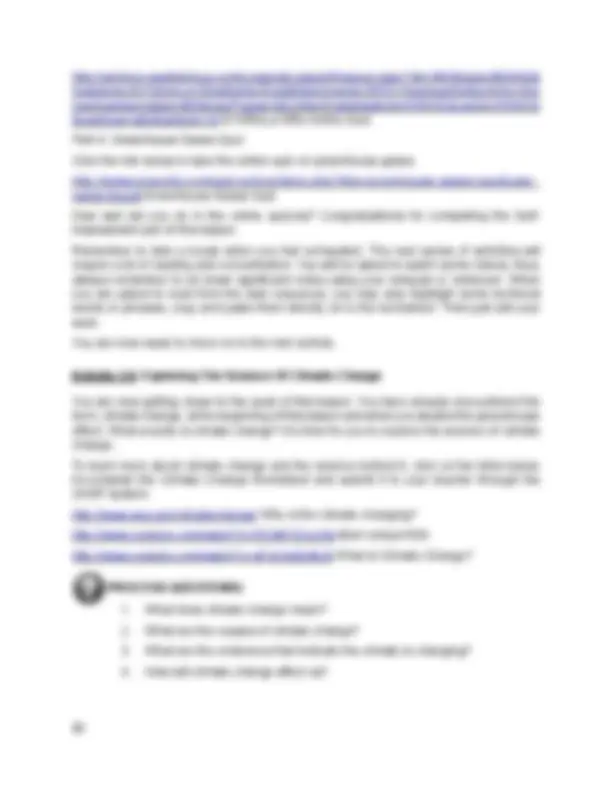
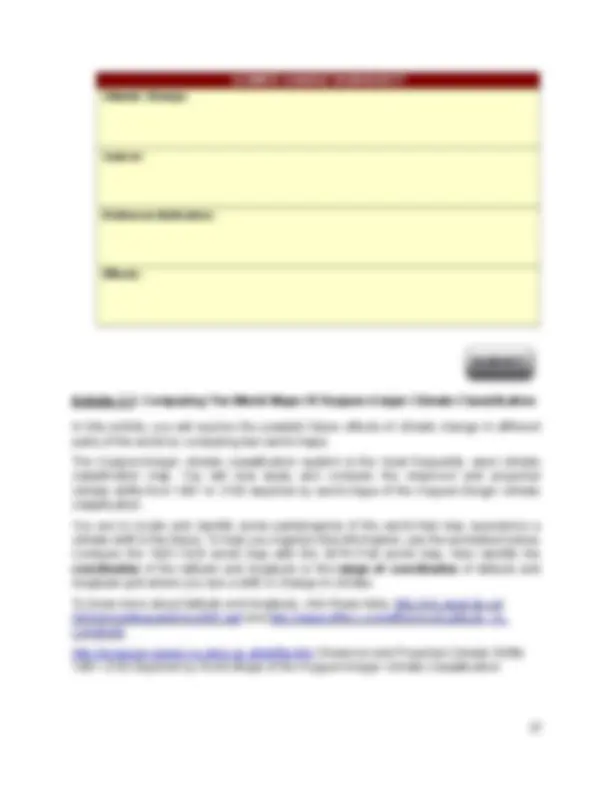
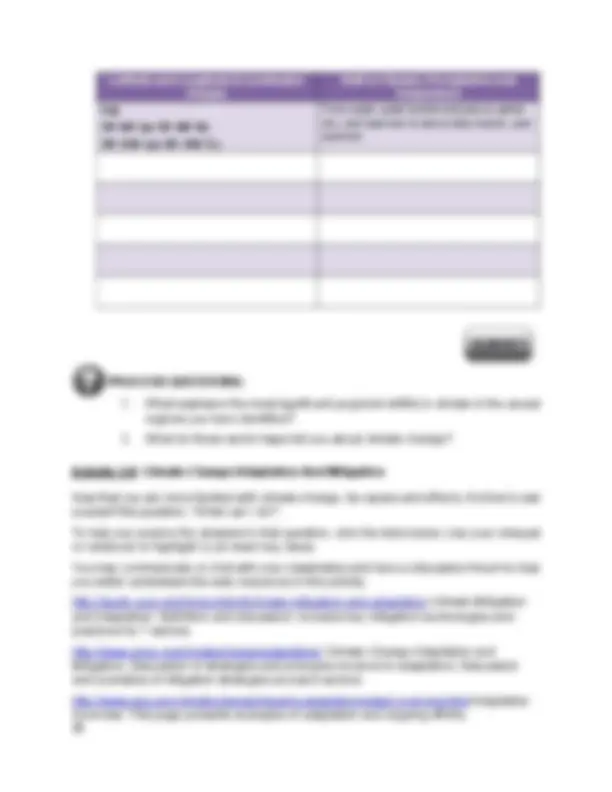
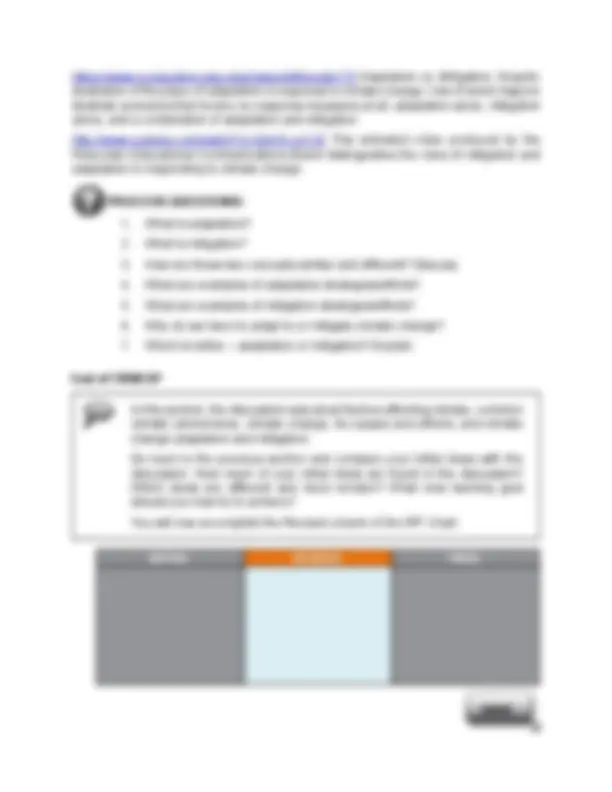
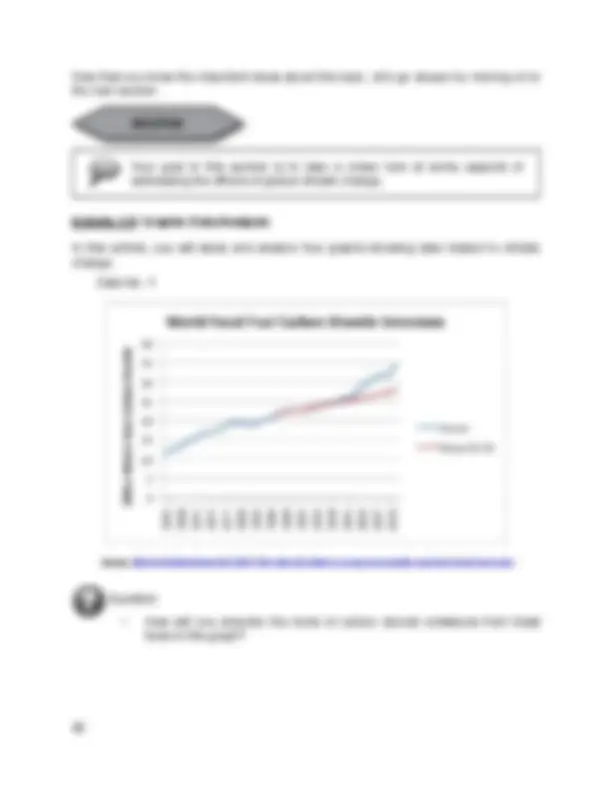
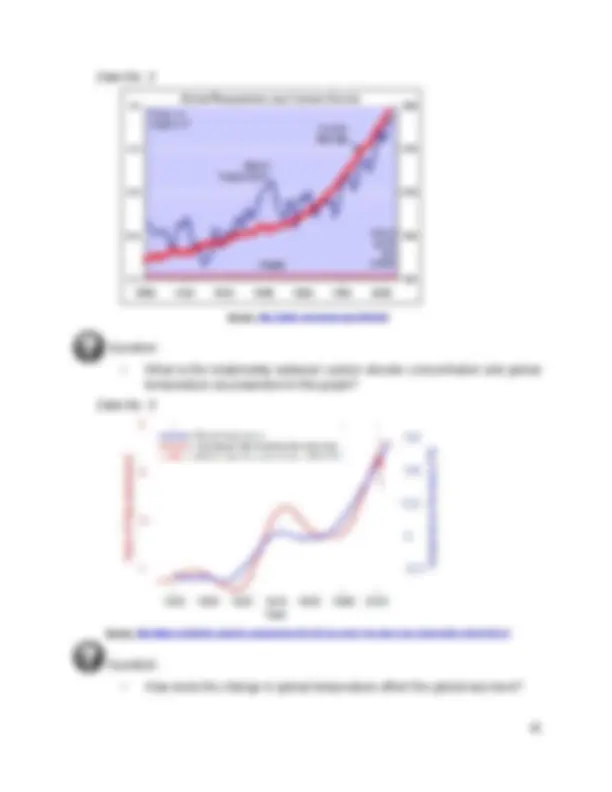
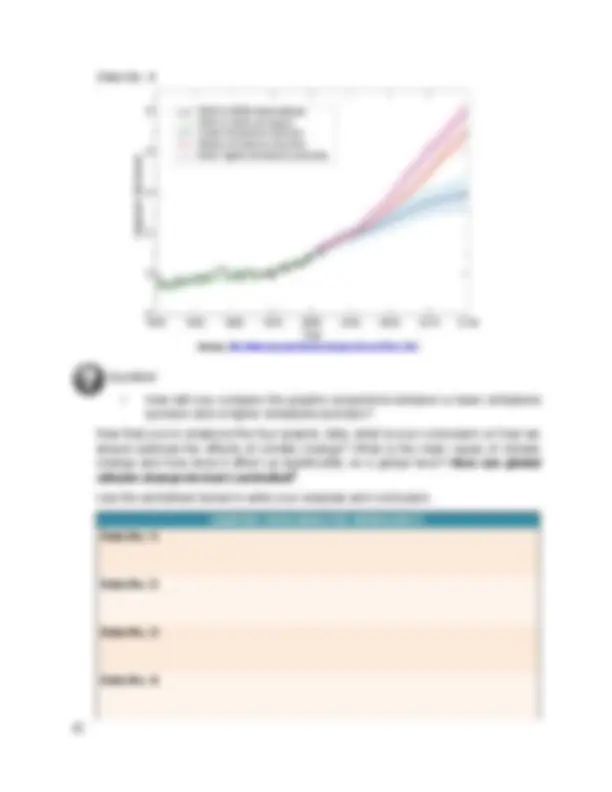
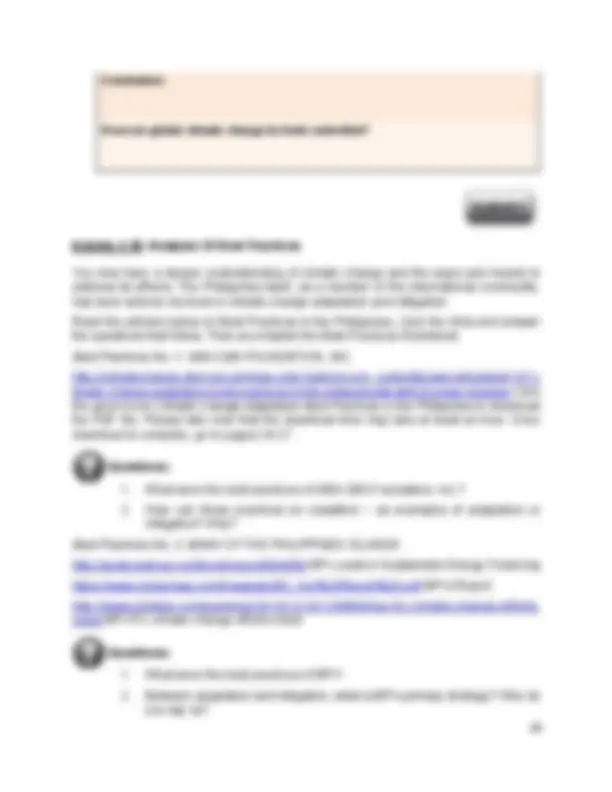
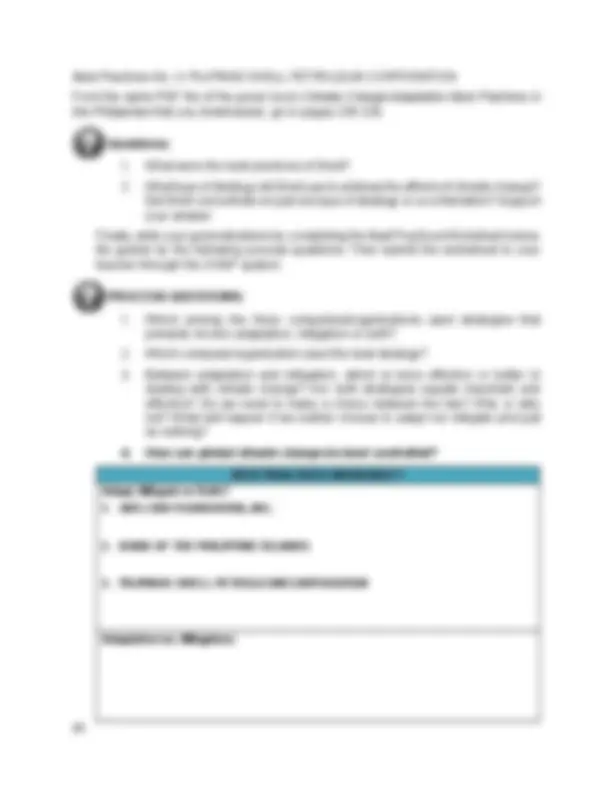
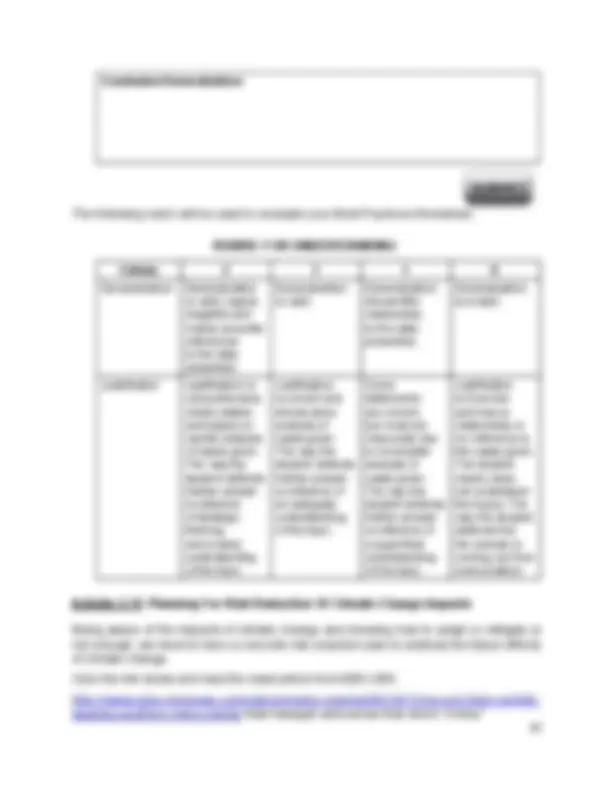
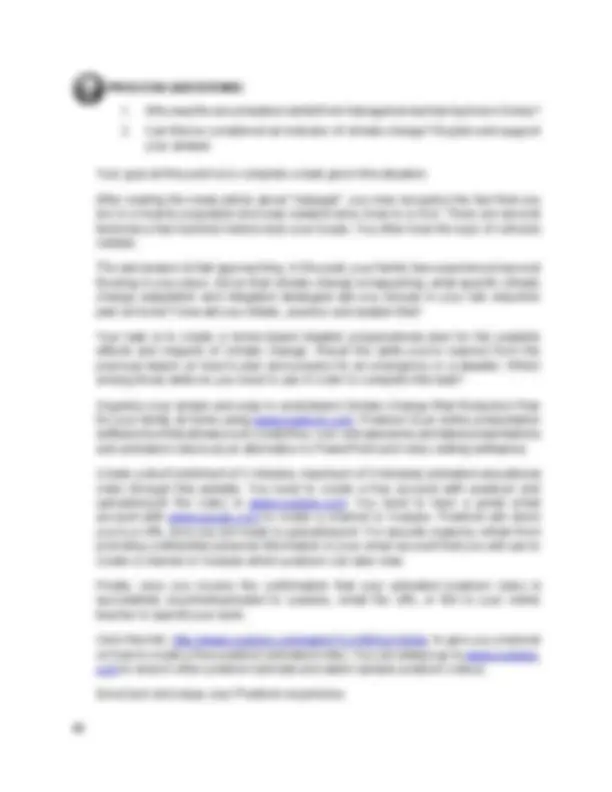
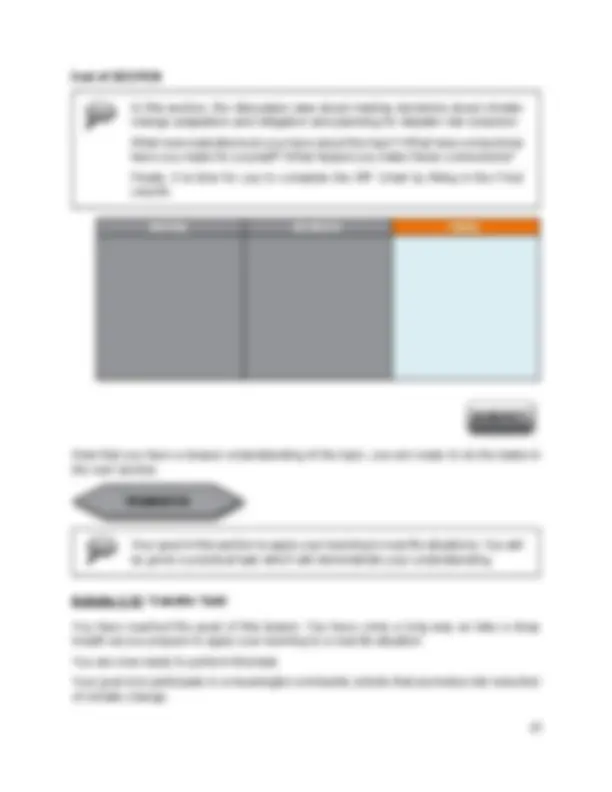
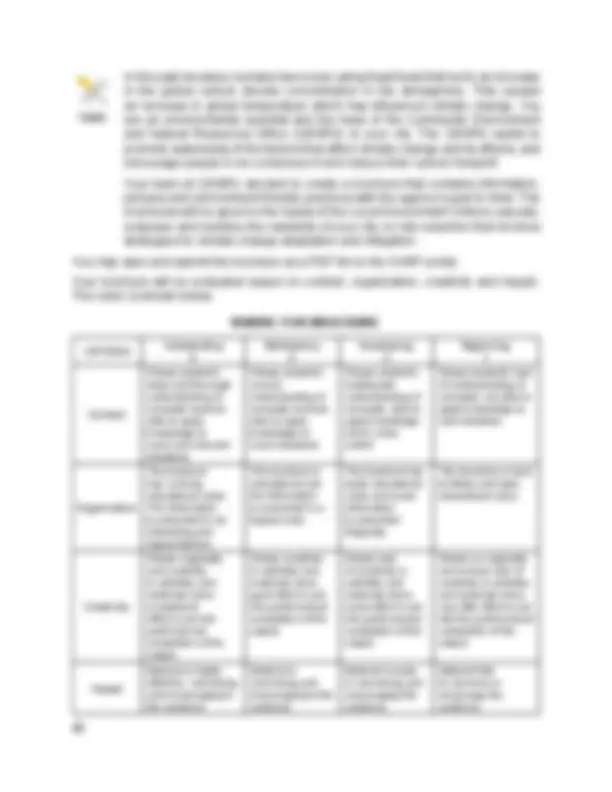
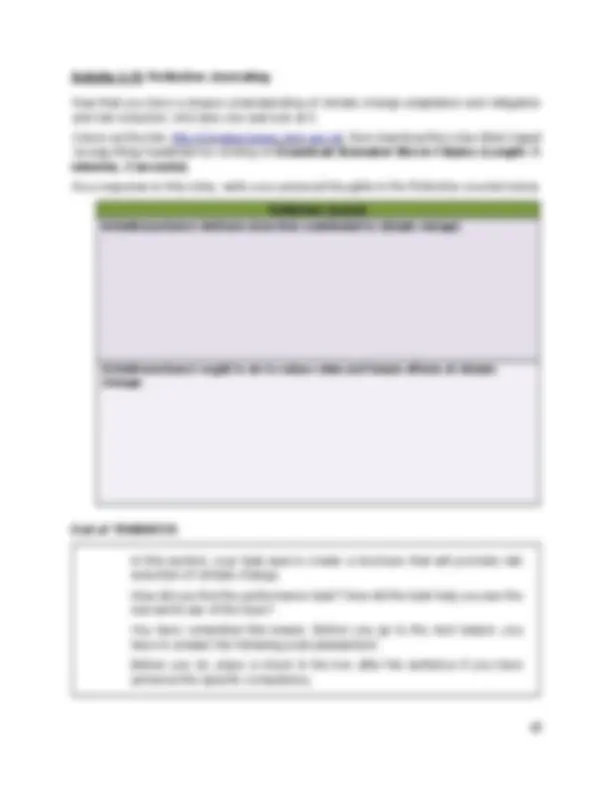
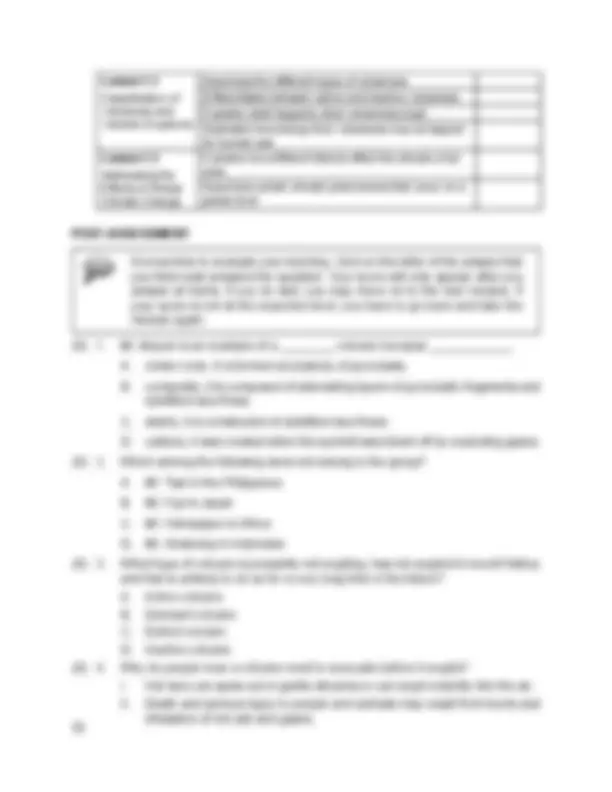
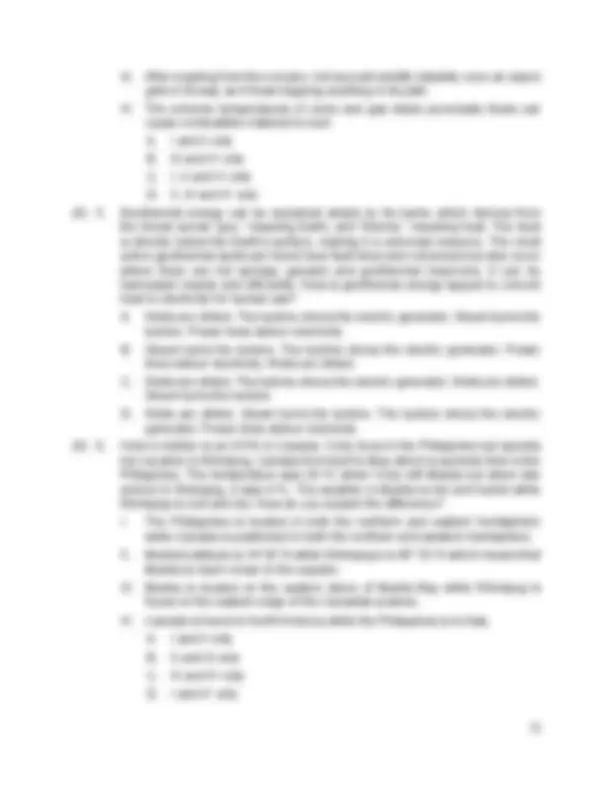
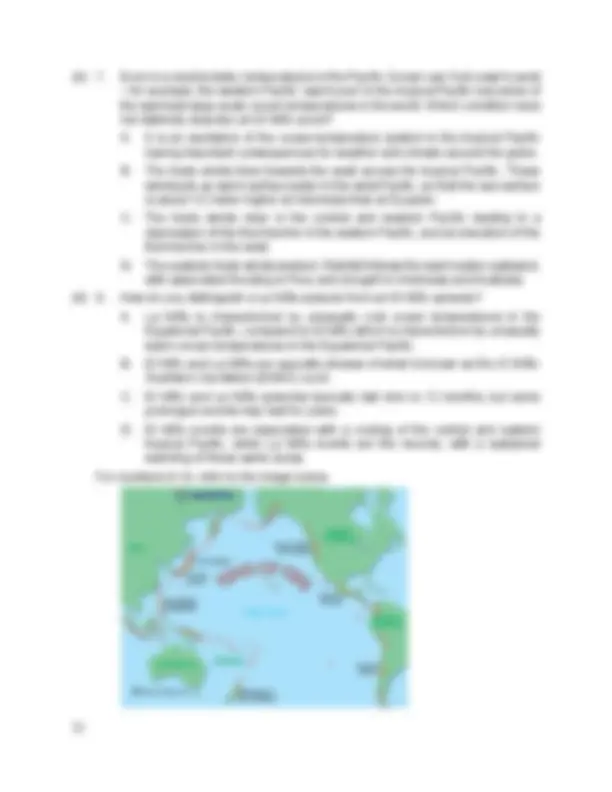
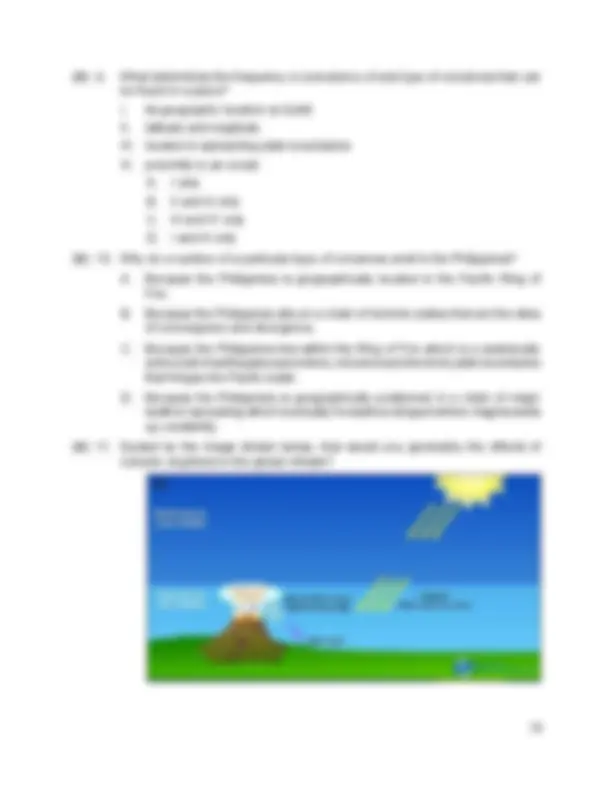
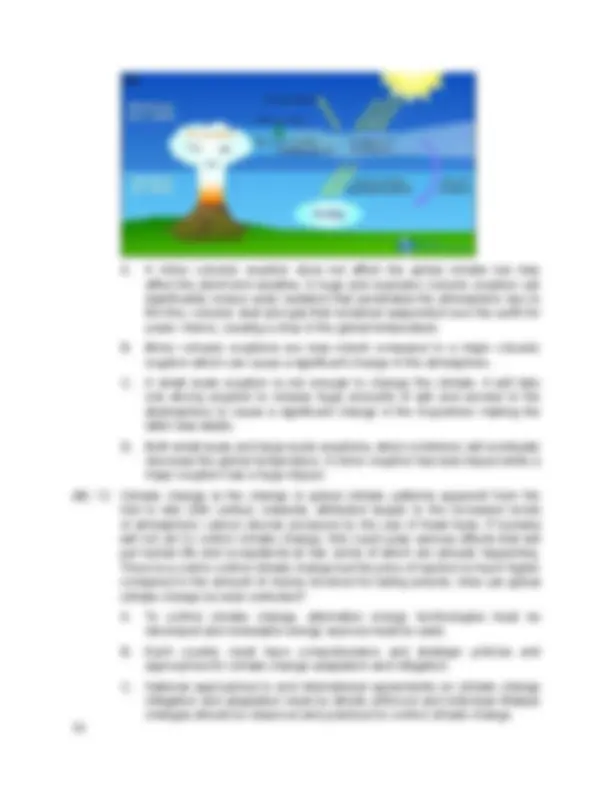
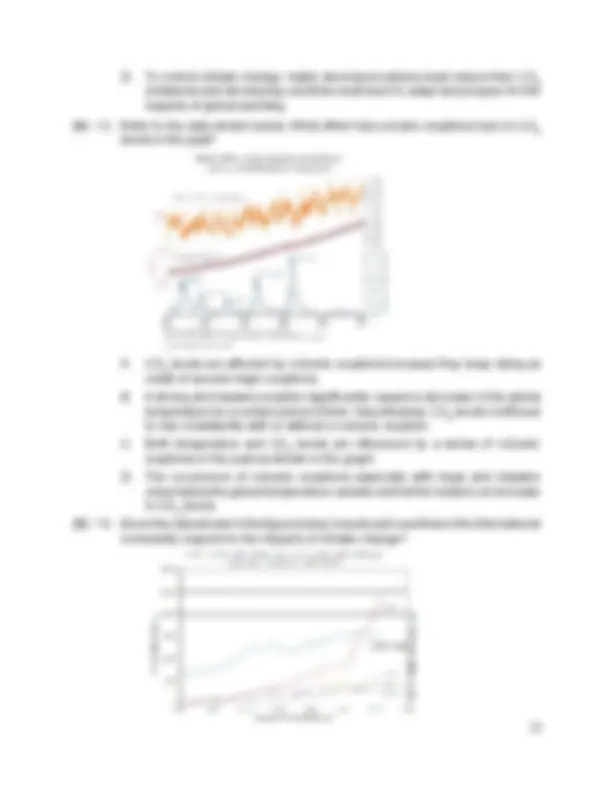
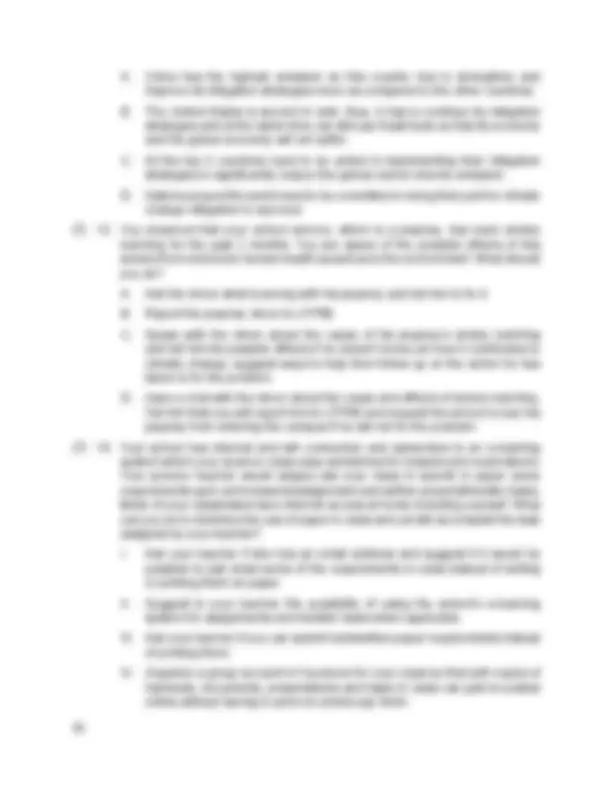
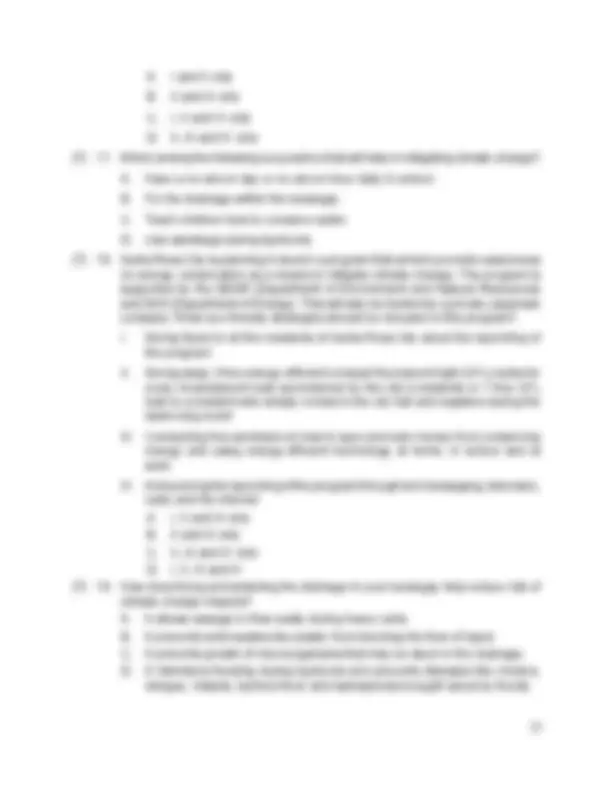

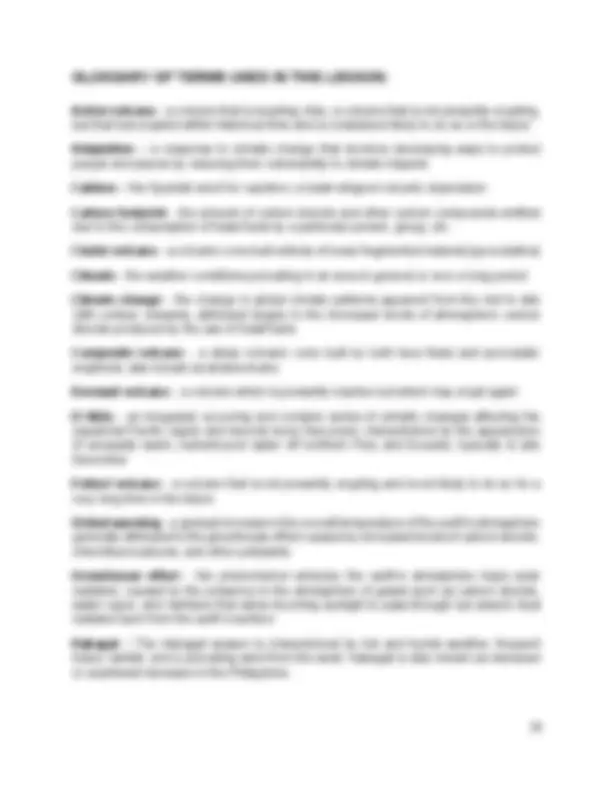
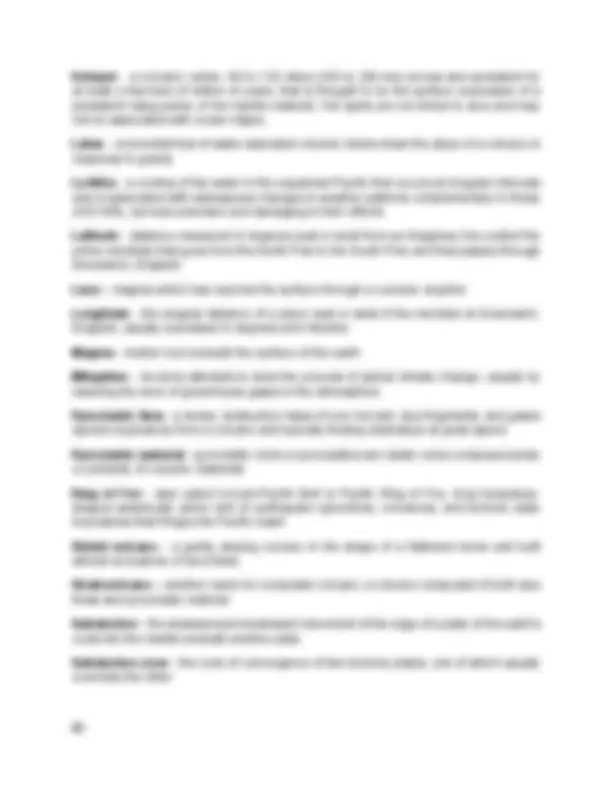
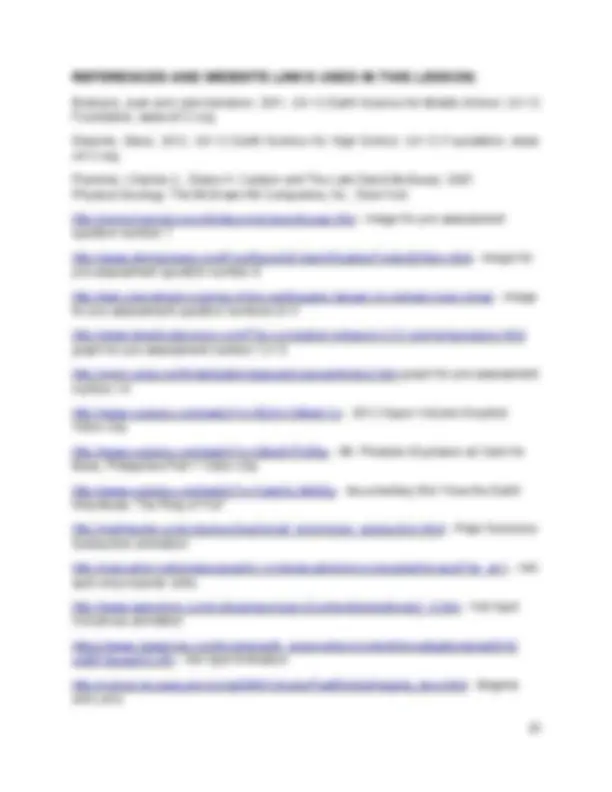
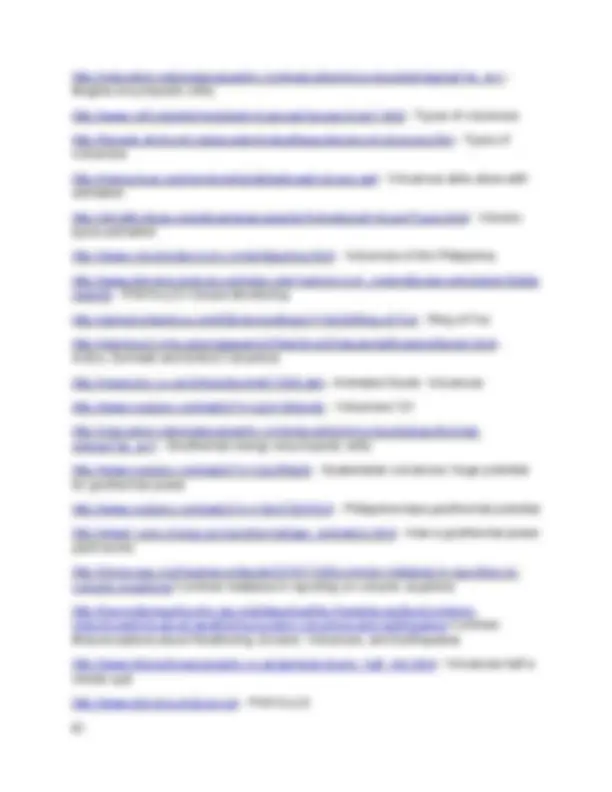

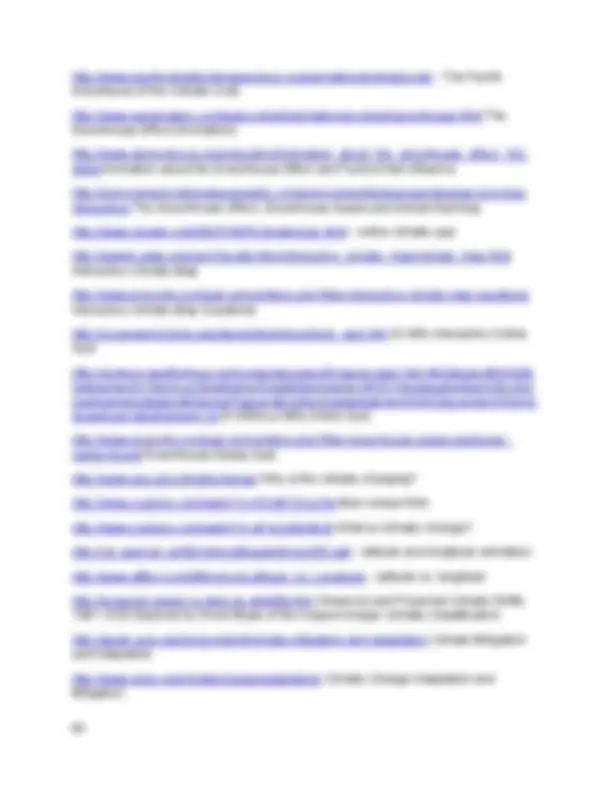


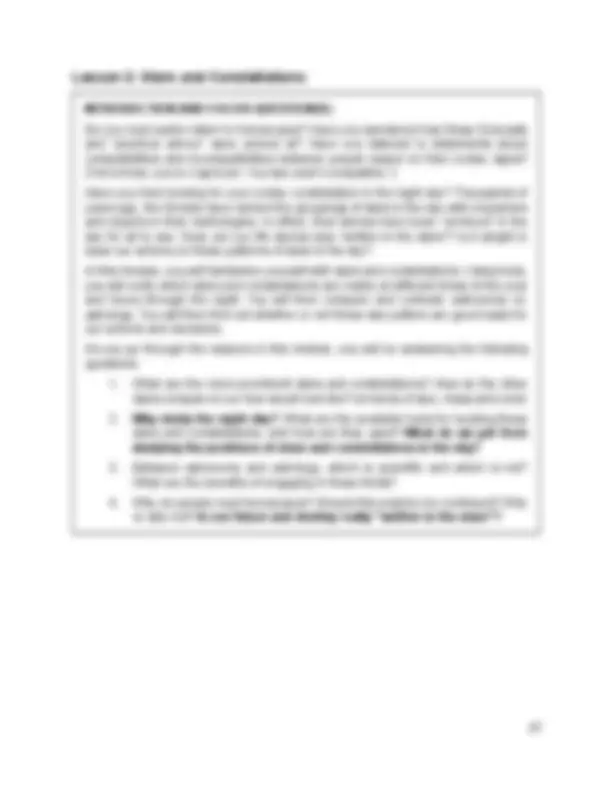
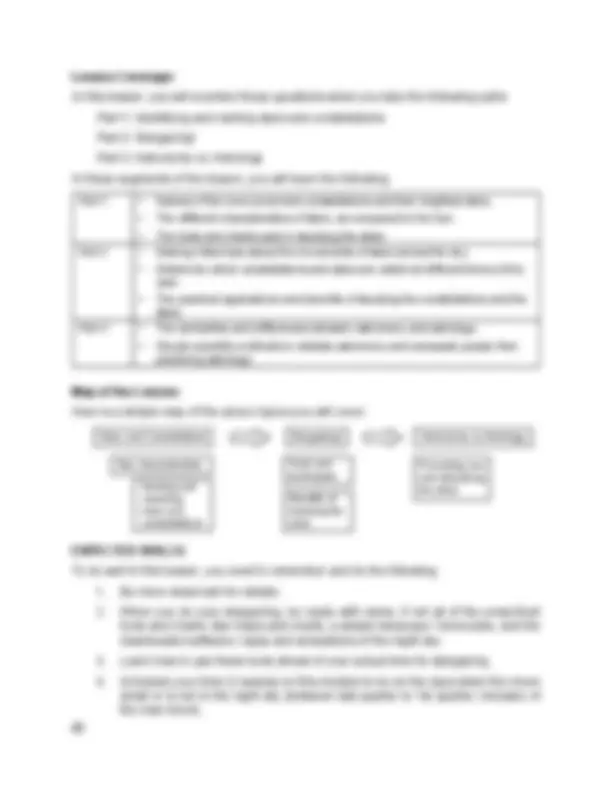
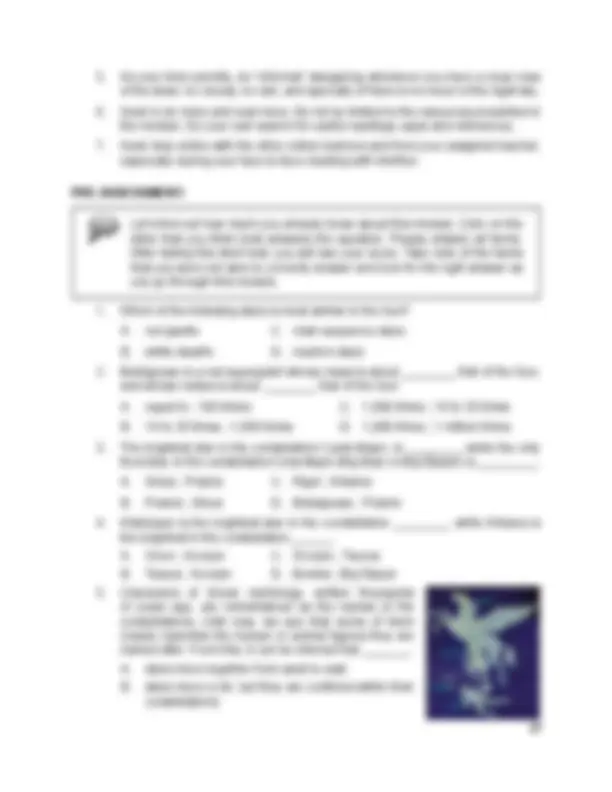
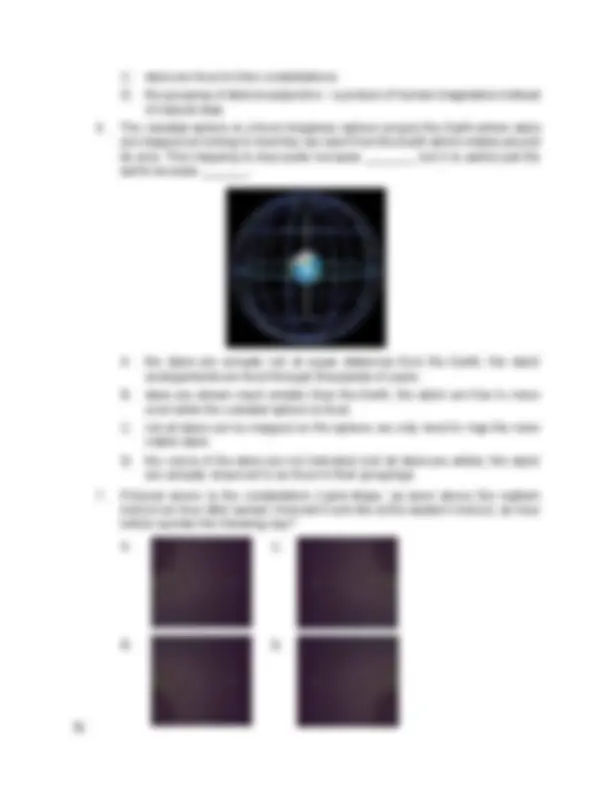
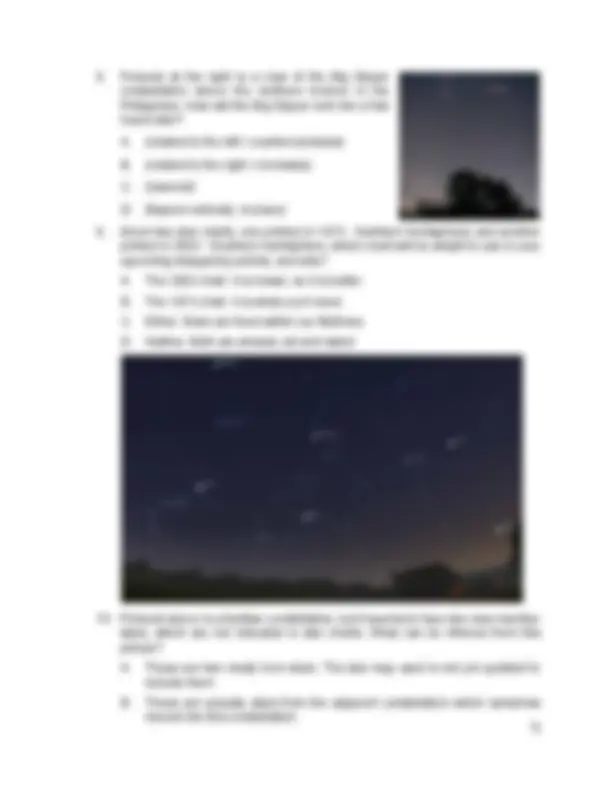
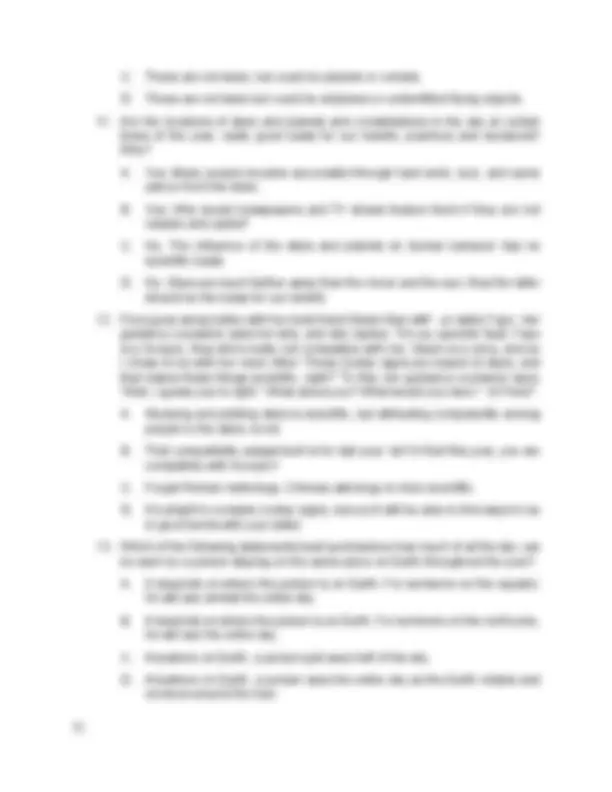
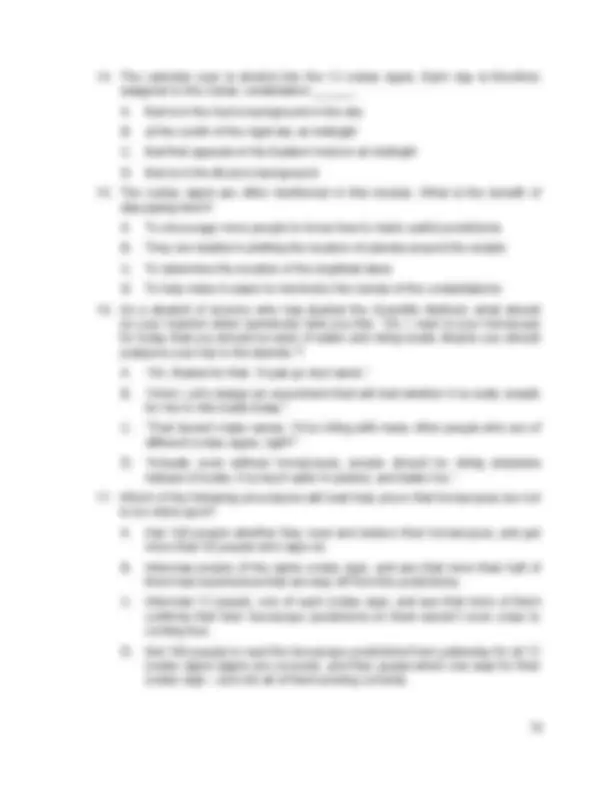
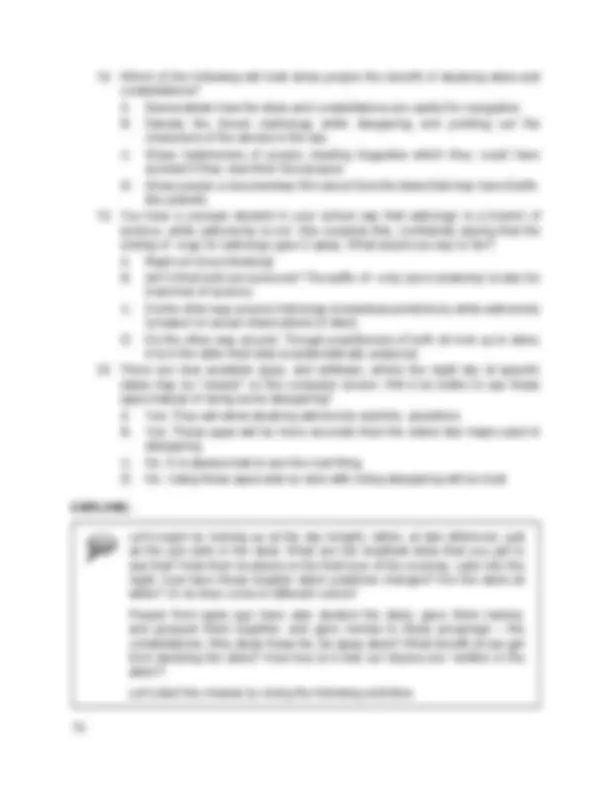
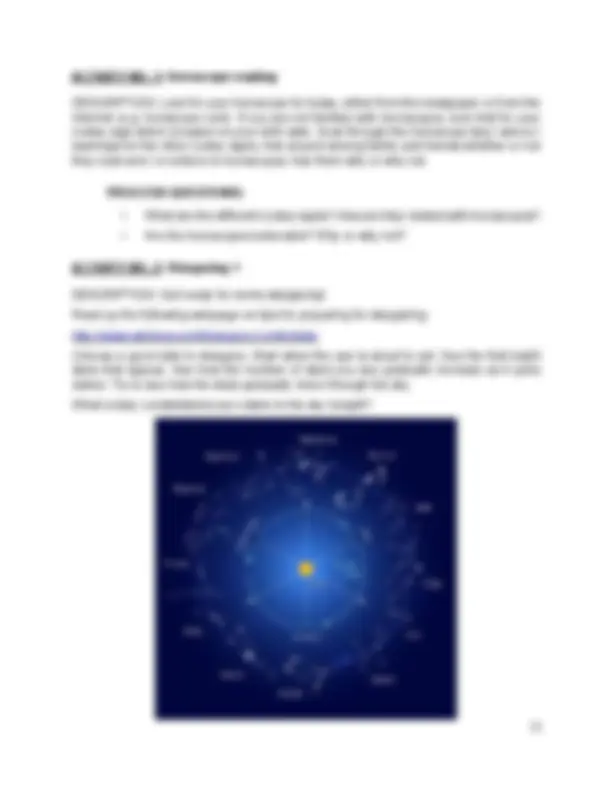
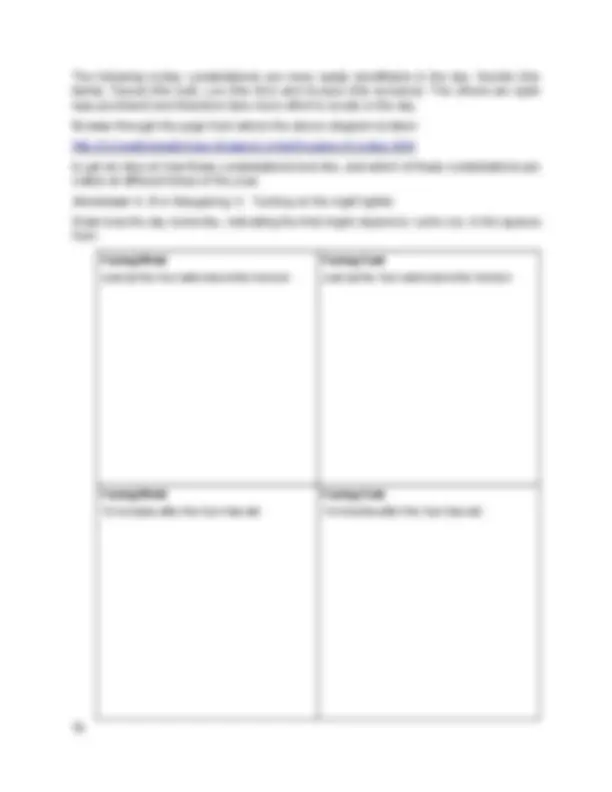
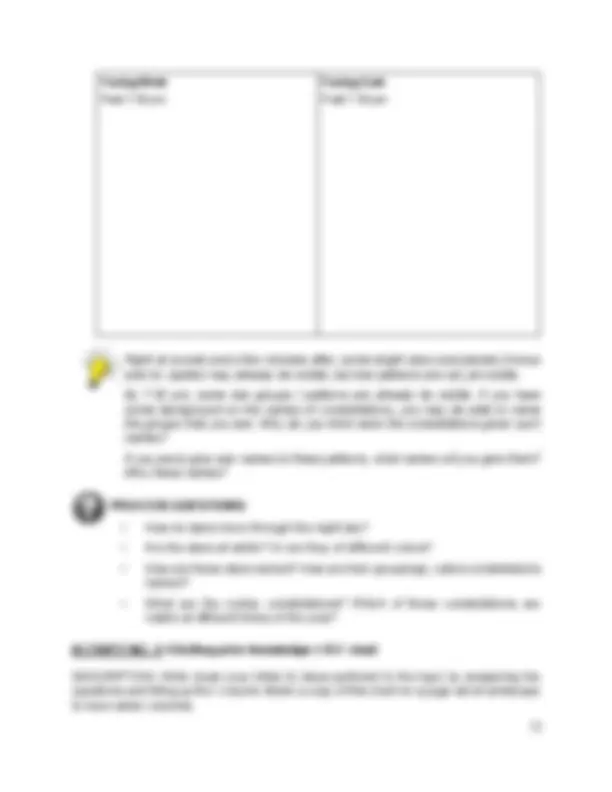
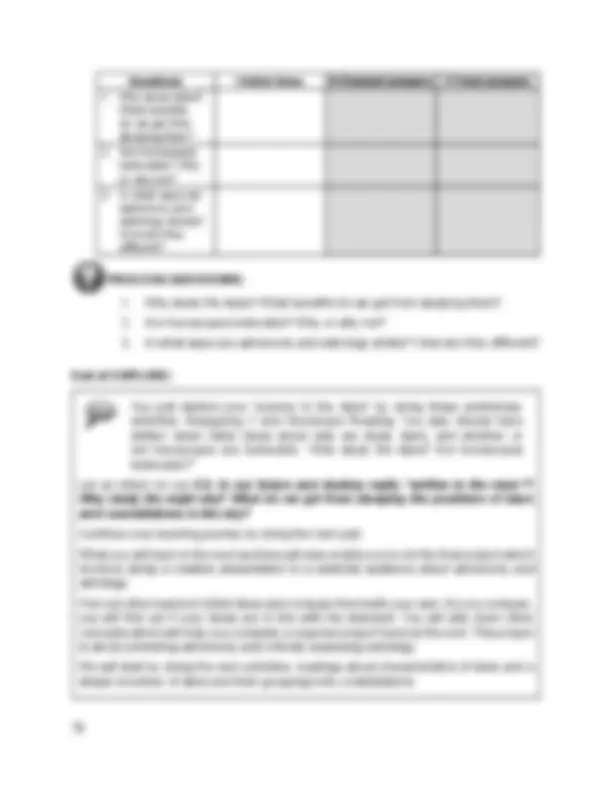
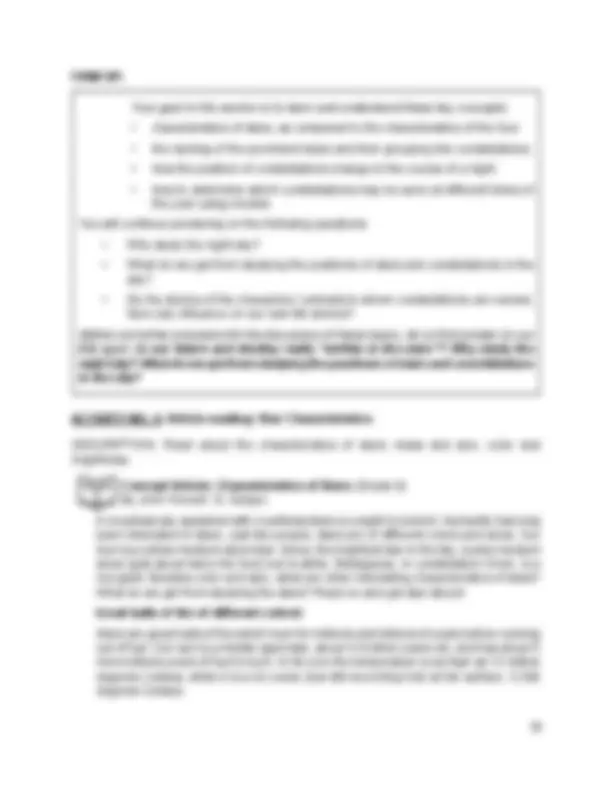
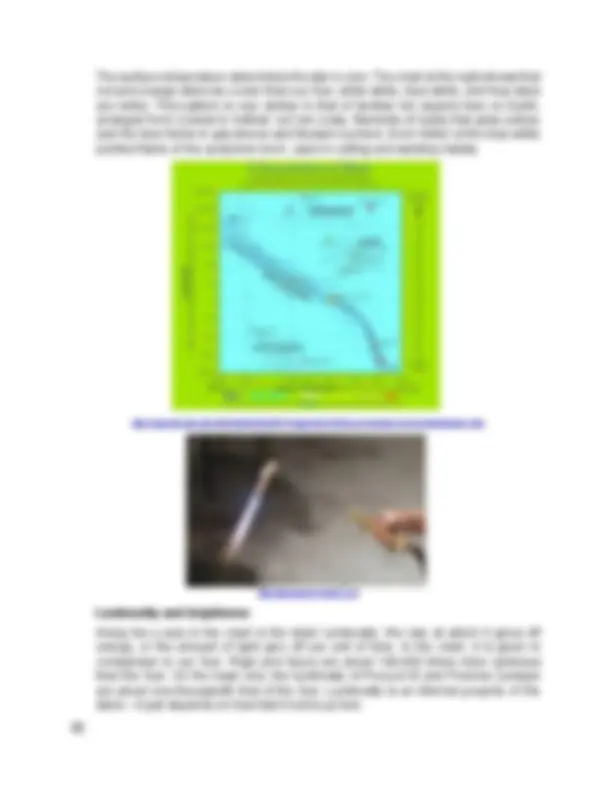
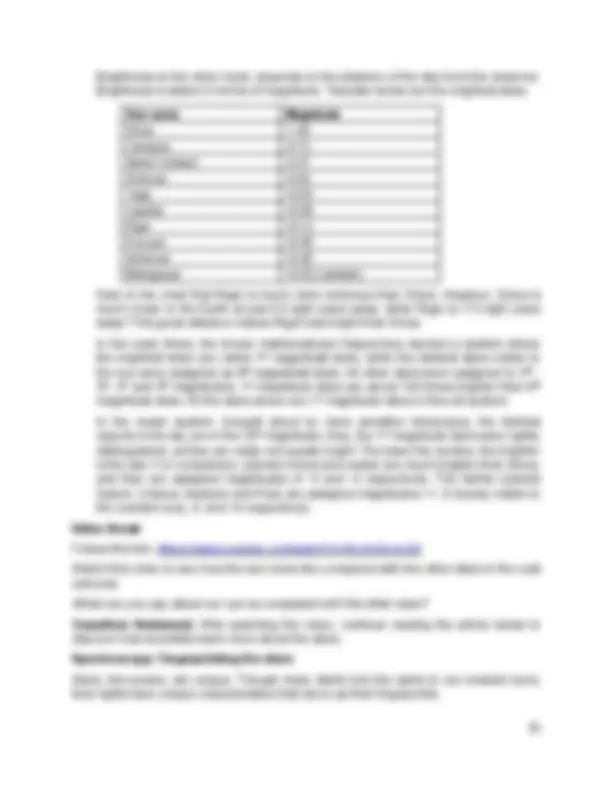
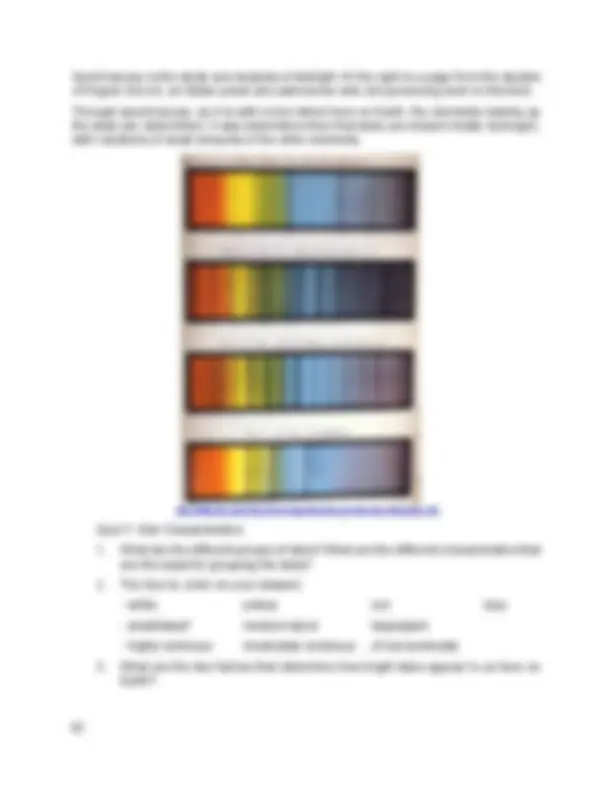
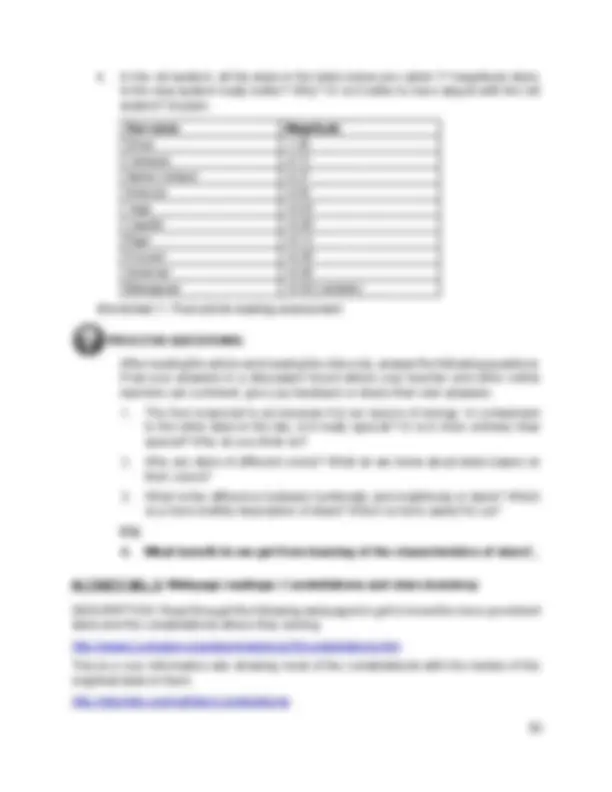
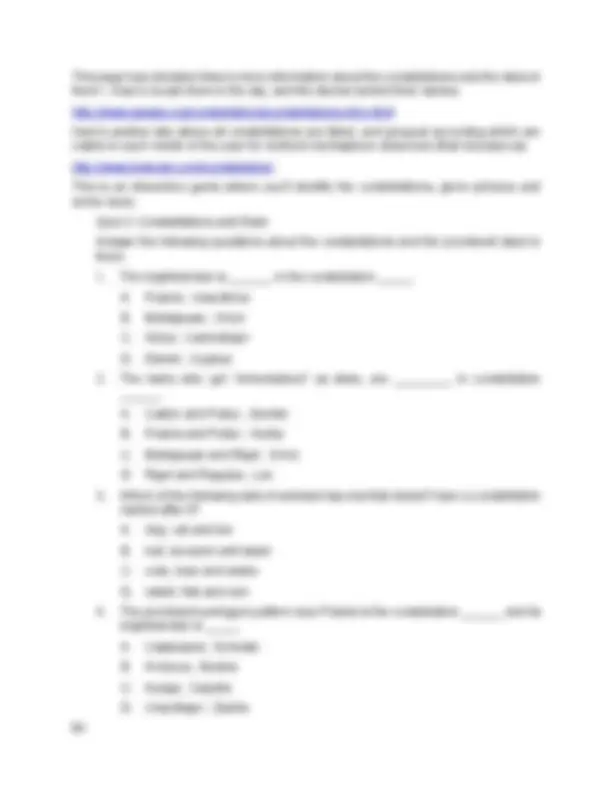
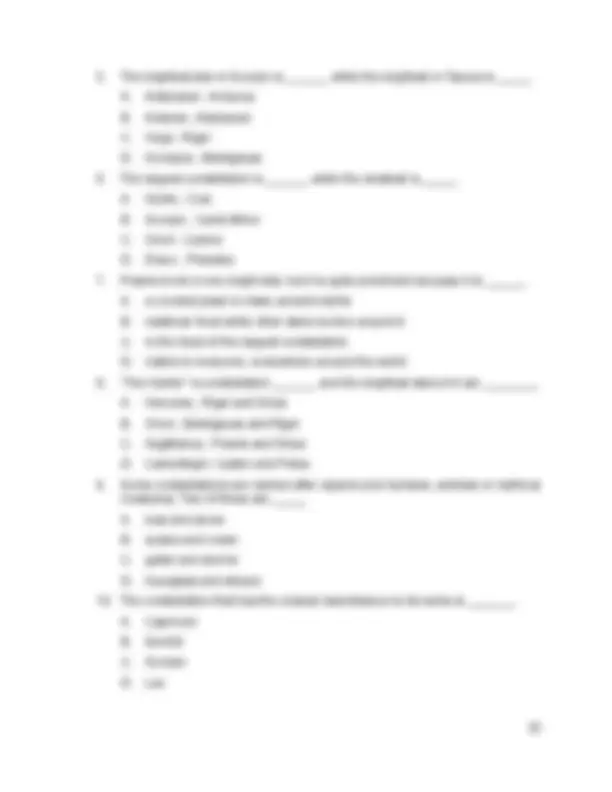
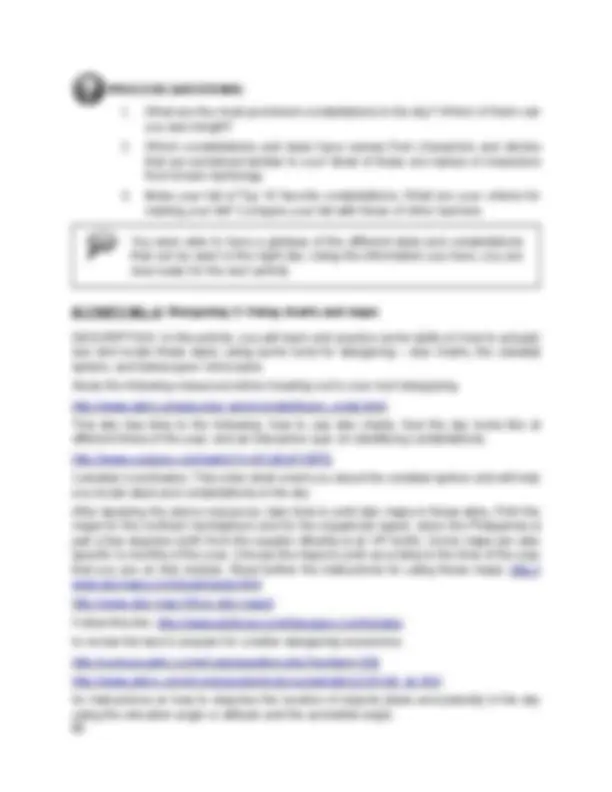
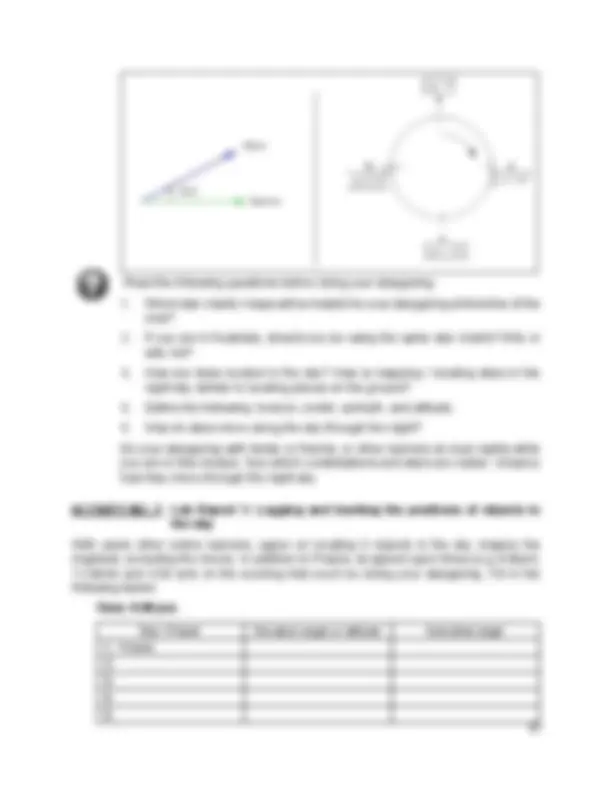
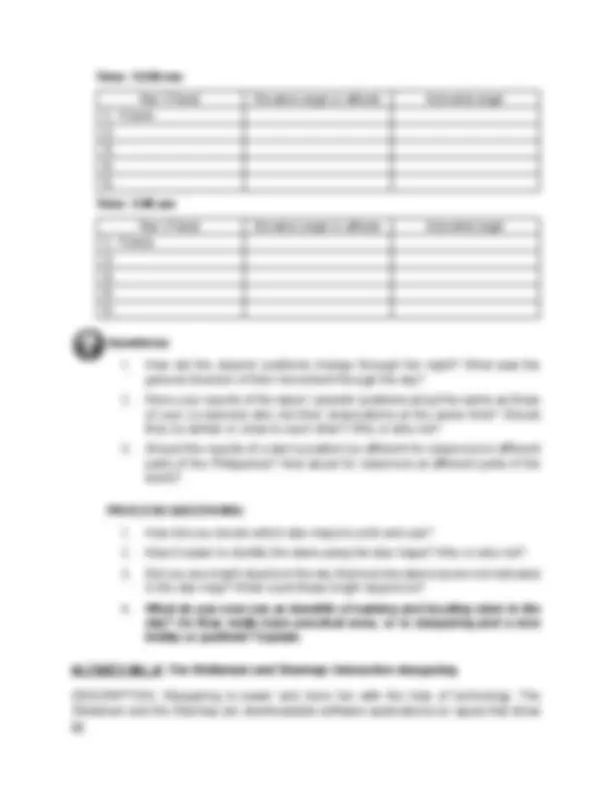
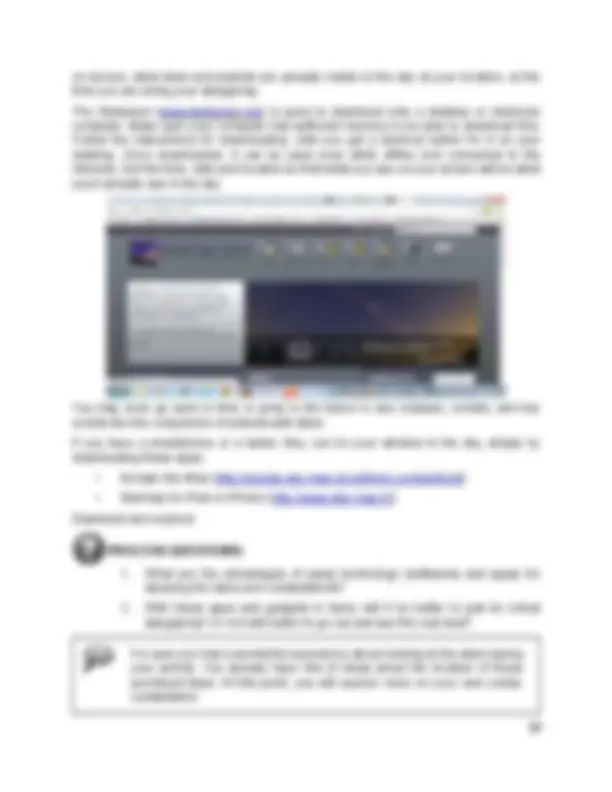
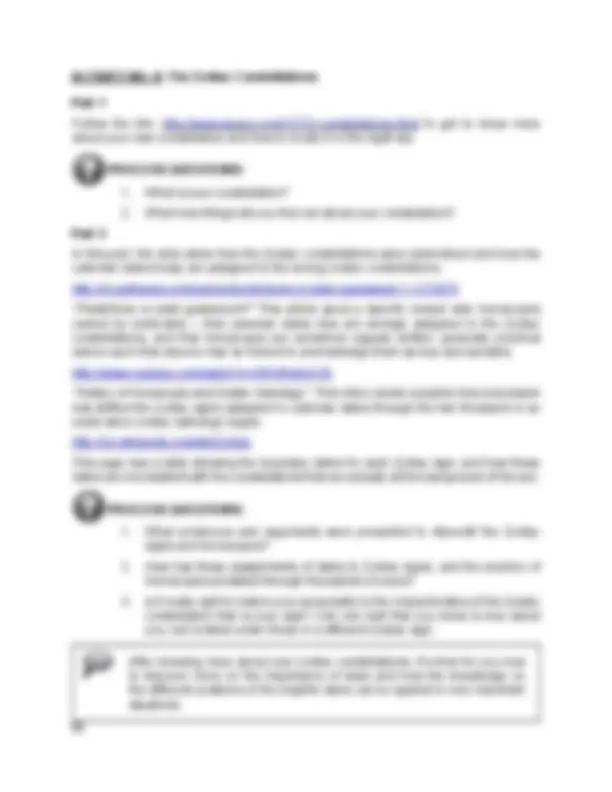
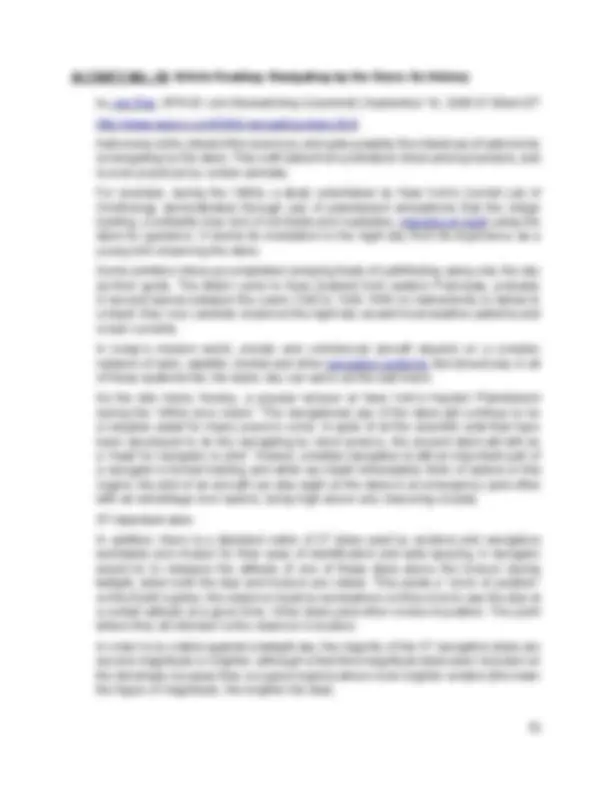
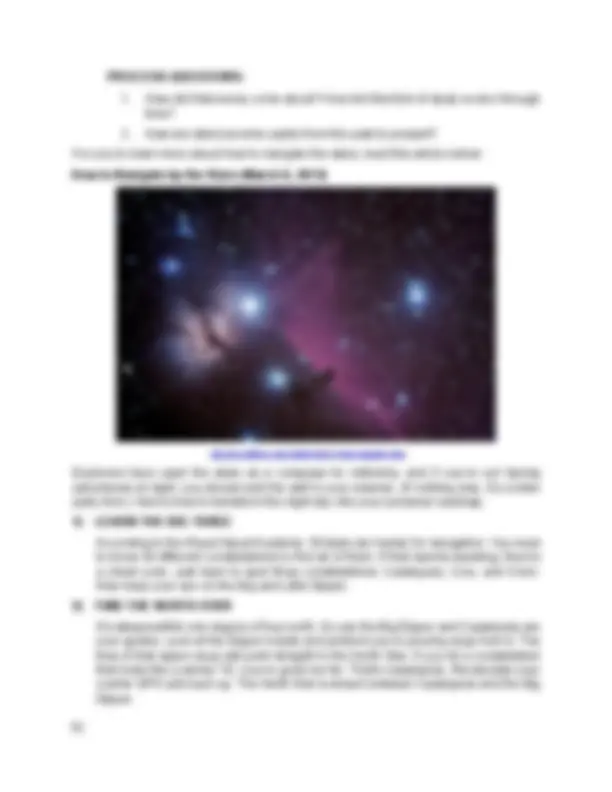
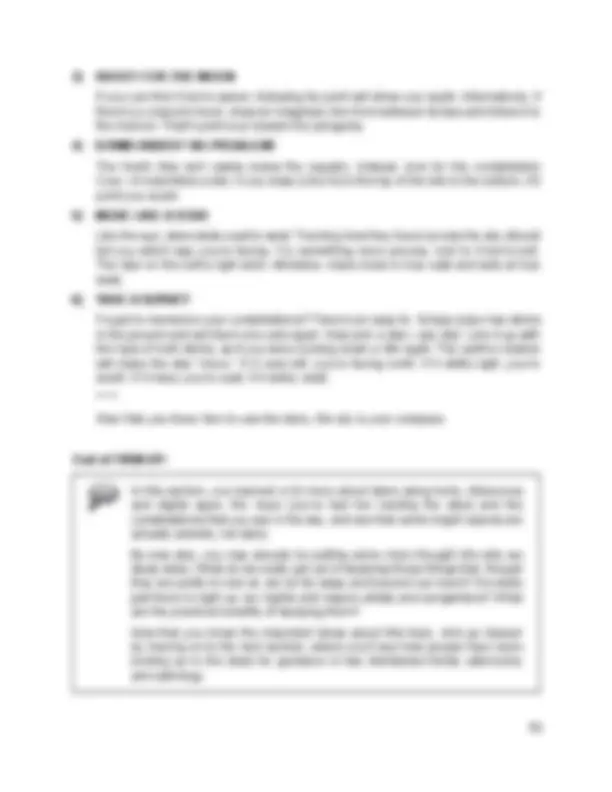
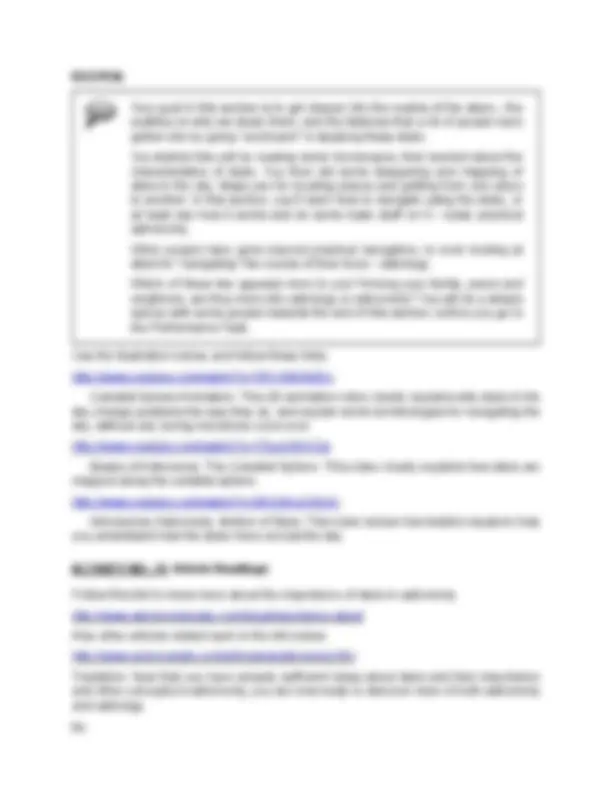
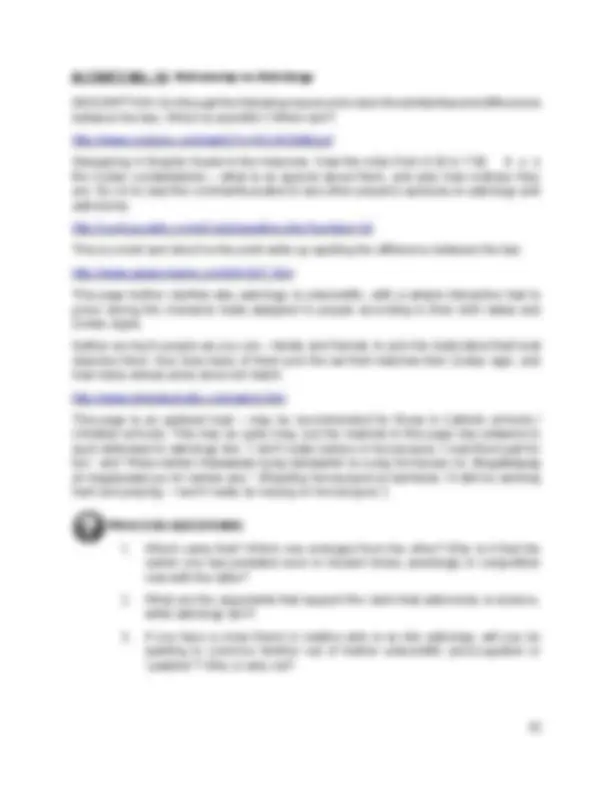
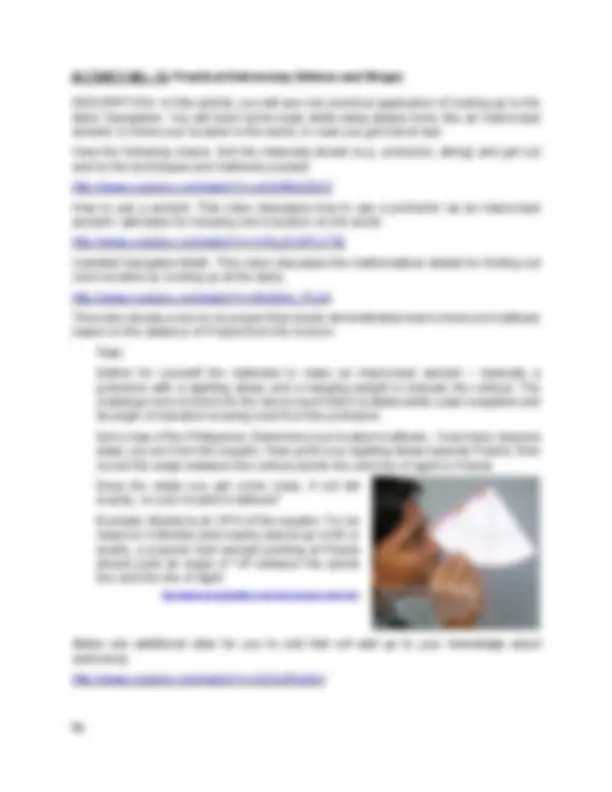
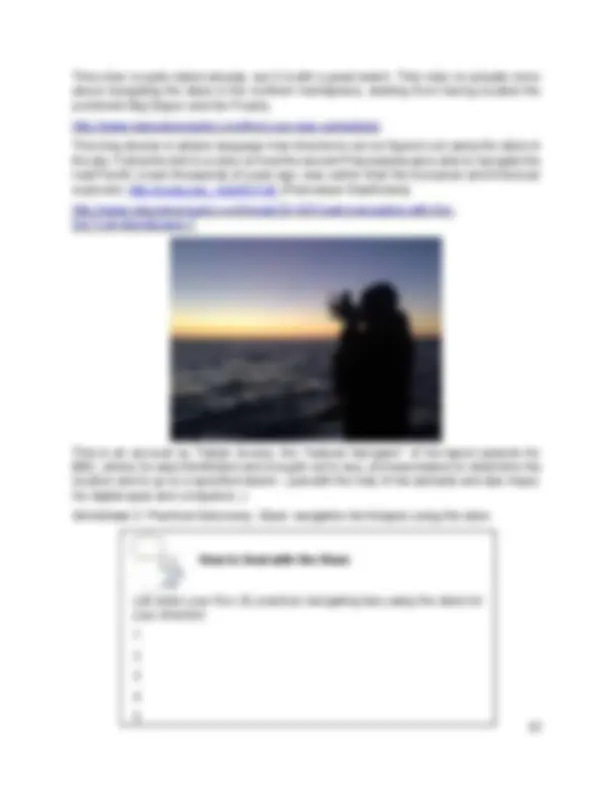
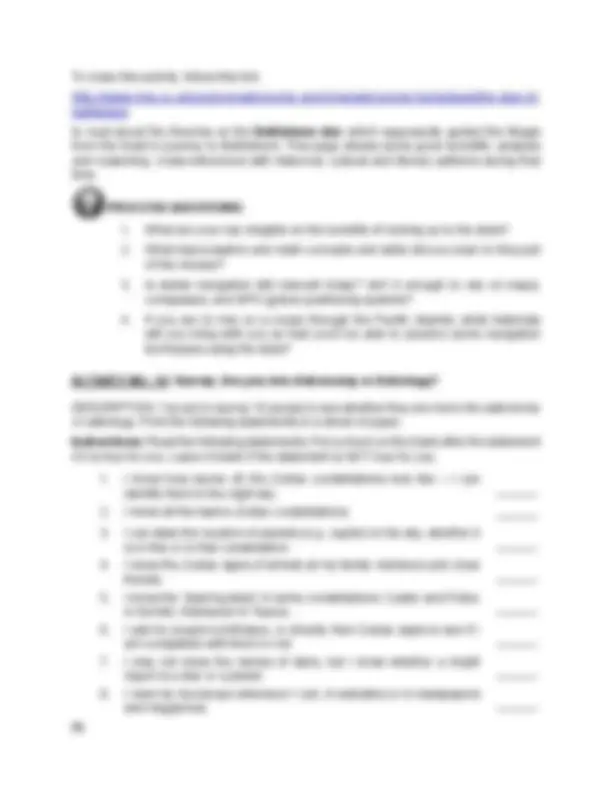
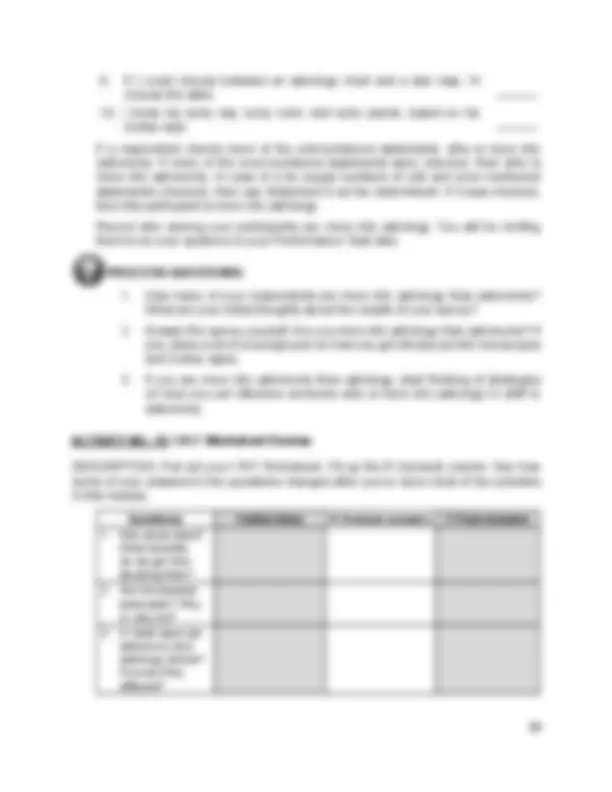
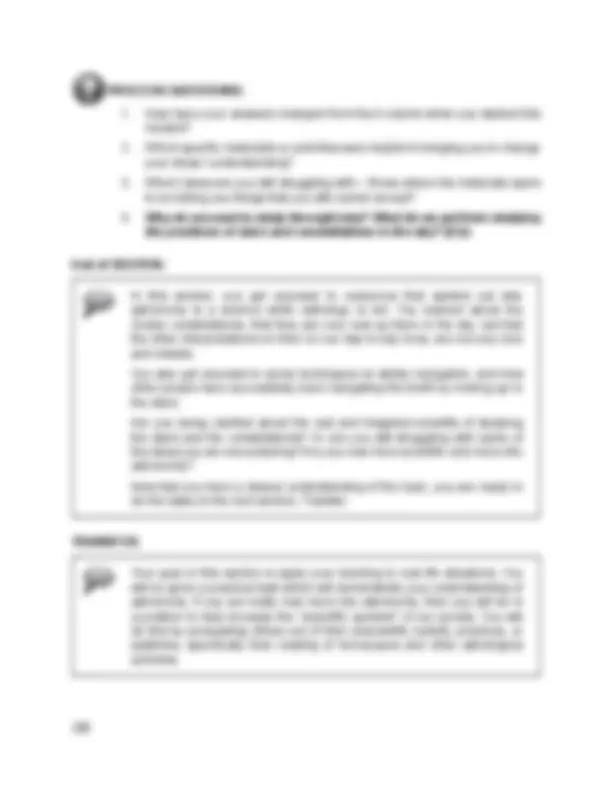


Study with the several resources on Docsity

Earn points by helping other students or get them with a premium plan


Prepare for your exams
Study with the several resources on Docsity

Earn points to download
Earn points by helping other students or get them with a premium plan
Community
Ask the community for help and clear up your study doubts
Discover the best universities in your country according to Docsity users
Free resources
Download our free guides on studying techniques, anxiety management strategies, and thesis advice from Docsity tutors
Resources for understanding climate change, its causes and effects, and offers strategies and technologies for adaptation and mitigation. It includes links to definitions, discussions, examples, animations, and quizzes.
What you will learn
Typology: Assignments
1 / 110

This page cannot be seen from the preview
Don't miss anything!





























































































Introduction and Focus Questions Have you personally been to Albay or Tagaytay? Have you actually seen Mayon Volcano or Taal Volcano? Have you ever seen a live volcanic eruption? How did that make you feel? If you haven’t, wouldn’t you want to see an erupting volcano in full view or at least see a real volcano in person? Have you heard about the damage caused by the eruption of Mount Pinatubo in Zambales? Volcanic eruption is not new in the Philippines and we’ve had several eruptions in the past decades. Why do a number of a particular type of volcanoes exist in the Philippines? Is it possible for volcanic eruptions to affect our climate in the Philippines or other parts of the world? What exactly are the factors that affect the climate of a place? Recently and in the past years, there has been much discussion about global climate change and its effects. How can global climate change be best controlled? These are some of the questions that you will need to find the answers in this module.
The above lesson will cover the following:
Lesson No. Title You’ll learn to… Estimated Time 1.1 Volcanoes: Classification of Volcanoes and Volcanic Eruptions
10 Hours
1.2 Climate: Addressing the Effects of Global Climate Change
9 Hours
Here is a simple map of the lessons you will cover:
Formation and Classification
Volcanoes
Volcanic Eruption: Its Cause, Events and Effects; Geothermal Energy
Disaster Preparedness and Risk Reduction
Climate
Addressing the Effects of Global Climate Change
Factors That Affect Climate
To do well in this lesson, you need to remember and do the following:
A. The magma collects in magma chambers that can be 160 kilometers beneath the surface. B. As the rock heats, it expands, which creates even more pressure causing the magma to seek a way out pushing toward the surface. C. Eruption of the magma on the surface is always violent and explosive due to the extreme heat and pressure. D. When magma reaches the surface, it comes out and is called an eruption.
(A) 5. In the recent past, humans have been looking for and trying out alternative sources of renewable energy to reduce dependence on fossil fuels. How can the energy from volcanoes be tapped for human use? A. The lava can be used for cooking. B. The energy from the magma can be used to heat water. C. Geothermal energy can be tapped to produce steam used for heating showers. D. Geothermal energy can be used to generate electricity.
(A) 6. Wilma recently migrated to Washington, DC in the United States on October 31 st^ last year. She is originally from Manila, Philippines. She knows that come November, it’s already fall season in the USA which means it would be cold. What she finds fascinating is when she’s taking a walk around noon time to look for a fast food chain in the city, the sun was never positioned directly overhead as she can see from her shadow. The sun seems to be just above the horizon. On the other hand, when she was in Manila on the same month of the year and the same time of the day, the sun would be directly above her and it would feel hot outside. Which statement best explains Wilma’s observation about factors that determine the climate of a place? I. The amount of solar energy a particular location receives is the most important factor in determining that location’s temperature. II. The lower the latitude, the more sunlight an area will receive. At the equator, days are equally long year-round and the sun is just about directly overhead at midday. III. The tropics are warmer than the temperate regions. The polar areas are in between, both in latitude and average air temperature. IV. The amount of sunlight that strikes the ground is different at each latitude. A. II and IV only B. I and III only C. I and IV only D. II, III and IV only
(A) 7. In the image below, which is true about the greenhouse effect?
A. It is the retention of part of the sun’s energy in the Earth’s atmosphere in the form of heat as a result of the presence of greenhouse gases. B. It is the heating of the atmosphere resulting from the absorption of radiation from the sun. C. It involves both natural and man-made greenhouse gases that completely trap the infrared and UV radiation from the sun. D. It refers to both the absorbed and escaped solar energy in the atmosphere through the help of greenhouse gases.
(A) 8. Looking at the image below, which among the following statements is incorrect about El Niño?
A. The term El Niño refers to the large-scale ocean-atmosphere climate interaction linked to a periodic warming in sea surface temperatures across the central and east-central Equatorial Pacific. B. El Niño means The Little Boy , or Christ Child in Spanish.
(M) 11. Several stratovolcanoes like Mt. Mayon of the Philippines, Mt. Fuji of Japan, Mt. Sinabung of Indonesia and Mt. Saint Helens of the USA are located in the ring of fire. Would you say stratovolcanoes are common in the Philippines? Why or why not? A. Yes, because approximately 75% of the world’s volcanoes are found in the Pacific ring of fire and stratovolcanoes are common around the ring of fire. B. Yes, because all of the world’s active stratovolcanoes are found in the ring of fire. C. Yes, because 100% of stratovolcanoes are located within the ring of fire where plate boundaries are actively subducting. D. No, because there are other types of volcanoes in the Philippines. For numbers 12-13, refer to the graph below.
(M) 12. Which statement best describes the graph showing the relationship between carbon dioxide and temperature from 1964 to 2008? A. Temperature is inversely proportional with the carbon dioxide concentration for this time period. B. Temperature is direcly proportional with the carbon dioxide concentration for this time period. C. As the concentration of carbon dioxide increases, so does the temperature in a span of approximately 5 decades. D. From 1964 to 2008, the CO 2 concentration is steadily increasing. While temperature is variable, the general trend is increasing as well.
(M) 13. Based on the graph shown above, what does this tell us about how the global CO 2 concentration will affect the global temperature in the future? A. The trend will be the same because the period covered to complete this data is long enough to forecast the future. B. The trend may continue to rise for CO 2 concentration if we continue to use fossil fuels at the same rate or with a higher emission rate, thus further causing an increase in global temperature. C. We cannot predict the future trend because we don’t have the data yet. D. The global temperature is bound to increase in the future because humans will continue to burn fossil fuels which currently are our sole source of energy. For number 14, use the graph below.
(M) 14. What does this projected data tell us about how human activities contribute to global climate change?
A. The international community needs to be united and committed in making huge and drastic efforts now to adapt to and mitigate climate change to reduce greenhouse gas emissions and establish more carbon sinks because it will stiil take about 100 years before CO 2 and temperature will stabilize.
B. Humans, on a global level, are the main contributors to climate change especially those from rich countries. Thus, the use of fossil fuels should be reduced mainly by developed countries like the US.
A. Check out the website of PHIVOLCS and read on the past eruption history of Mt. Hibok-Hibok from your local library. B. Interview local community folks in the island about the past eruptions of this volcano and asked what they did. C. Be prepared for a possible volcanic eruption by keeping and regularly maintaining a bag of clothes, footwear, non-perishable goods, bottled water, toiletries, flashlight, batteries, and cash which is always ready to carry anytime. D. Search the internet or other resources for pertinent data about Mt. Hibok- Hibok, talk to long-time residents or officials in the area, and discuss with your family a possible volcanic disaster preparedness plan.
(T) 18. Your family has internet access at home but no wifi connection yet. Your younger siblings, who are currently in grade school, love watching TV while playing with their gadgets, and surfing the internet in your family’s desktop computer all at the same time. You have an environmental science subject in school. What can you do in this situation to apply what you have learned in class about climate change? A. Tell your siblings to use only one gadget/electronic device at a time to save on electric bills. B. Educate them on how to save electricity for their own future because using too much electricity contributes to climate change. C. Teach them about the carbon cycle for kids using an animation, let them take a fun online quiz, then give a prize for the highest scorer. D. Show them an animation for kids of the greenhouse effect and have them watch a short animated video about climate change then ask them how their actions/activities contribute to climate change.
(T) 19. Given that climate change is happening, which among the above activities has the most impact when in comes to reducing your carbon footprint? I. walking to/from school II. riding a bicycle III. carpooling IV. using an electric motorbike A. I and III only B. II and IV only C. I and II only D. III and IV only
(T) 20. Your school has a solid waste management program. Which slogan would you use as a guiding principle for this program to promote awareness of climate change? A. Segregate and Clean As You Go B. Reduce, Reuse, Recycle C. Stop and Pick a Trash D. May Pera sa Basura
Read and answer the questions that follow after watching the two videos.
Activity 1.2: Eliciting Prior Knowledge Through the Anticipation-Reaction Guide
What were your initial answers to the questions posted in the previous activity?
Confirm your ideas about volcanoes using the Anticipation-Reaction (A-R) Guide provided. In the Anticipation column of the A-R Guide, tick the box of the corresponding statement in which you agree with.
ANTICIPATION STATEMENTS REACTION
End of EXPLORE
You gave your initial ideas on volcanoes by answering the Anticipation- Reaction Guide. Let’s find out how others would answer the above and compare their ideas to our own. As you compare, you will find out if your ideas are in line with the standard. You will also learn other concepts that will help you complete a required project found at the end. This project is about participating in a meaningful activity that promotes risk reduction of the effects of climate change by creating a brochure. We will start by doing the next activity.
Your goal in this section is to learn and understand the types of volcanoes and how they are formed, the difference between active and inactive volcanoes, and why many volcanoes are found in the Philippines. You will also know more about the processes and events involved when volcanoes erupt and discover how the energy from volcanoes may be tapped for human use.
Activity 1.3: Discovering the Pacific Ring of Fire
Documentary Film-Viewing. “How the Earth Was Made: The Ring of Fire”
Discover the Pacific Ring of Fire and learn how volcanoes are formed through this very interesting documentary film. While watching the film, jot down important terms or concepts and get their meanings as well. Use the Vocabulary Journal to write all the words that you will gather.
VOCABULARY JOURNAL VOLCANOES Term / Word / Concept Definition / Meaning / Importance
4. What are the 3 principal types of volcanoes? Which type of volcano is the most common in the Philippines?
http://www.cotf.edu/ete/modules/ volcanoes/vtypesvolcan1.html
http://facweb.stvincent.edu/academics/ pathways/science/volcanoes.htm
http://msnucleus.org/membership/ slideshows/volcano.swf
http://dli.taftcollege.edu/streams/ geography/Animations/VolcanoTypes.html
http://www.volcanodiscovery.com/ philippines.html
5. Why does the Philippines have many volcanoes?
http://www.phivolcs.dost.gov.ph/index. php?option=com_content&view=article&id =50&Itemid=
http://global.britannica.com/EBchecked/ topic/118426/Ring-of-Fire
5. What is the difference between an active and inactive volcano? How is dormant different from extinct?
http://ellerbruch.nmu.edu/classes/ cs255w03/cs255students/lfogle/p4/ facts3.html
7. What causes a volcano to erupt and what happens when it finally erupts?
http://news.bbc.co.uk/2/hi/sci/ tech/4972366.stm http://www.youtube.com/ watch?v=uZp1dNybgfc
8. How can we tap the energy from volcanoes for human use?
http://education.nationalgeographic.com/ education/encyclopedia/geothermal- energy/?ar_a=
http://www.youtube.com/ watch?v=ClpcfhtIpt
http://www.youtube.com/ watch?v=VdIxkTGW5VA
http://www1.eere.energy.gov/geothermal/ gpp_animation.html
Activity 1.5: Common Mistakes and Misconceptions About Volcanoes and Volcanic Eruptions
You now have heightened your knowledge about volcanoes after exploring the web resources. Other people including reporters in the media and students may still have some erroneous ideas about volcanoes. In this activity, you will know more about the common mistakes committed by the media in reporting volcanic eruptions and the common misconceptions of students about volcanoes.
Click the links below to read the articles.
http://blogs.agu.org/magmacumlaude/2010/11/09/common-mistakes-in-reporting-on- volcanic-eruptions/ Common mistakes in reporting on volcanic eruptions
http://beyondpenguins.ehe.osu.edu/issue/earths-changing-surface/common- misconceptions-about-weathering-erosion-volcanoes-and-earthquakes Common Misconceptions about Weathering, Erosion, Volcanoes, and Earthquakes
Activity 1.6: Self-Assessment
It’s now time for you to do an assessment of your progress in this module.
Part 1: Half a Minute Volcano Online Quiz
Click the link to take the Volcano Online Quiz. http://www.interactivegeography.co.uk/ games/volcano_half_min.html
Activity 1.7: Getting To Know PHIVOLCS
The Philippine Institute of Volcanology and Seismology (PHIVOLCS) is a service institute of the Department of Science and Technology (DOST) that is principally mandated to mitigate disasters that may arise from volcanic eruptions, earthquakes, tsunami and other related geotectonic phenomena.
Click on the following links to know more about PHIVOLCS, its services, programs and projects.
http://www.phivolcs.dost.gov.ph - Official website of the Philippine Institute of Volcanology and Seismology
http://www.phivolcs.dost.gov.ph/images/IEC/safeguarding%20life.pdf - Pamphlet from PHIVOLCS on “Safeguard Life and Investments by Understanding Geologic Hazards”
http://reliefweb.int/report/philippines/albay-province-philippines-coexisting-mayon- volcano-and-countermeasures-disaster - Article entitled “Albay Province, Philippines: Coexisting with Mayon Volcano and countermeasures for disaster preparedness
Complete the Bubble Map below by identifying some of PHIVOLCS initiatives, programs, projects and activities focusing on volcanic disasters.
PHIVOLCS Volcano
How should we respond to the Volcano Disaster Risk Reduction Programs and Projects of PHIVOLCS when there is a forecast for a volcanic eruption and when there isn’t?
Activity 1.8: Guide to Emergency Preparedness and Disaster Risk Reduction
A volcanic eruption is just one of several natural disasters that can cause huge damage to properties and even take the lives of people. Whether a disaster is caused by nature like an earthquake, tsunami, and typhoons or man-made like a fire from an explosion, chemical spills and war, we need to be prepared. We need to know the facts, understand the risks and have a plan in case of an emergency or when disaster strikes.
In this activity, your goal is to learn how to plan for an emergency in order to reduce risks of harmful consequences and critical threat to the health, safety, security and wellbeing of a community from a disaster.
Click the link below to know more about the seven steps to successful emergency preparedness.
http://www.careclimatechange.org/files/toolkit/CARE_Being_Ready.pdf - Being Ready: A Guide to the Emergency Preparedness Planning Process.
EMERGENCY PREPAREDNESS PLANNING PROCESS WORKSHEET
Seven Steps to Successful Emergency Preparedness
Details of the School’s Earthquake Emergency Preparedness Plan
Step 1: Gather Information